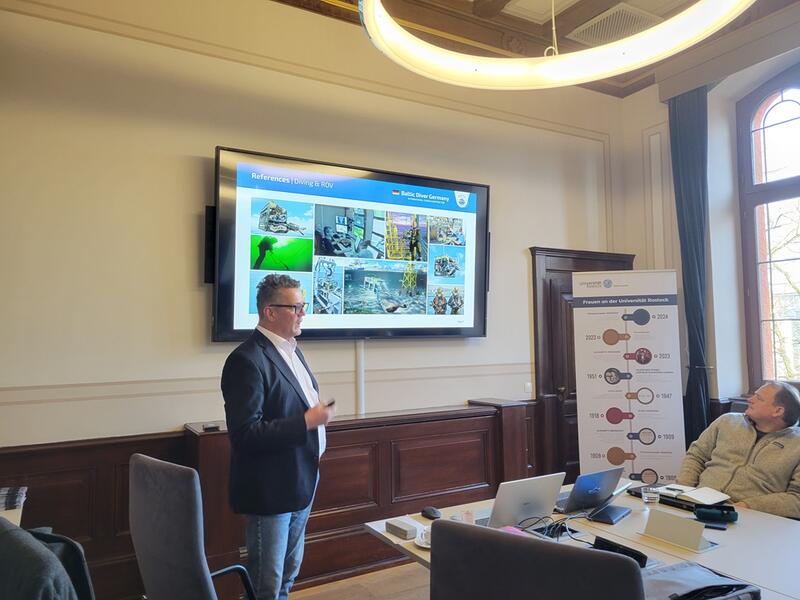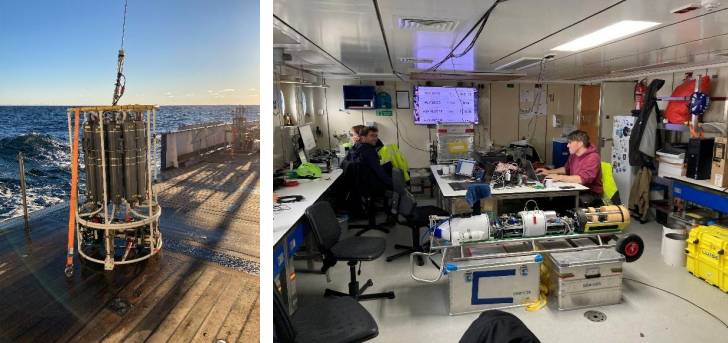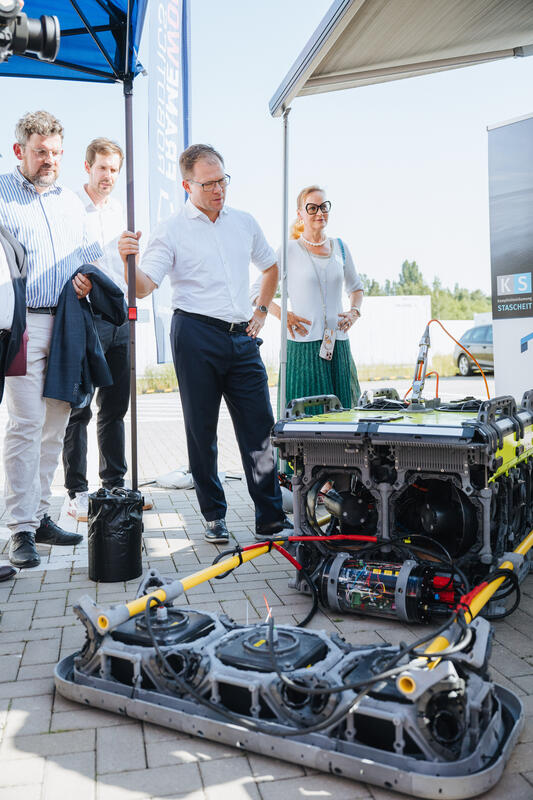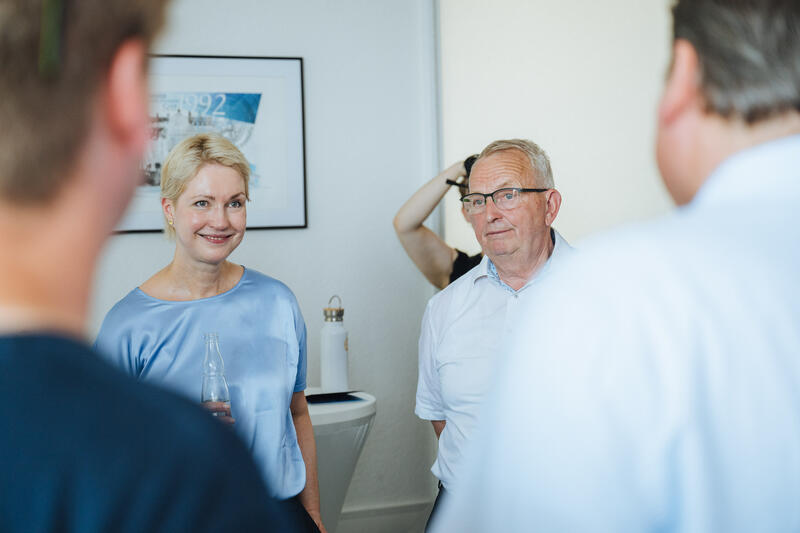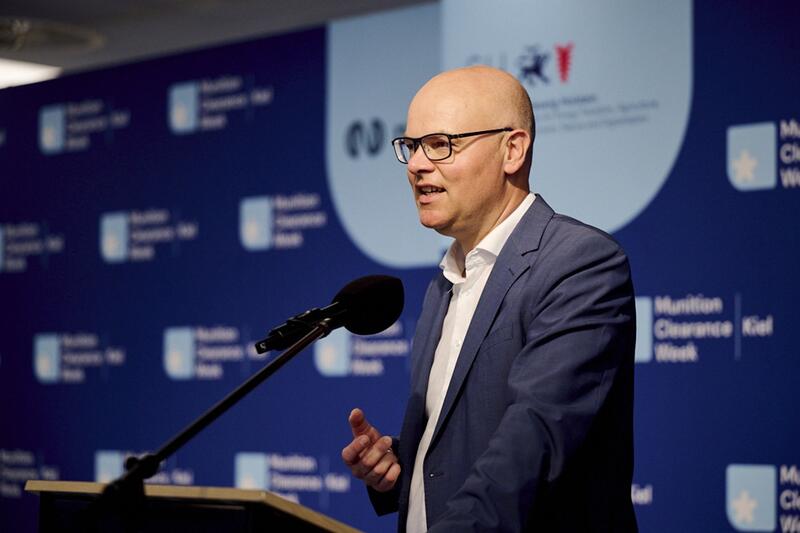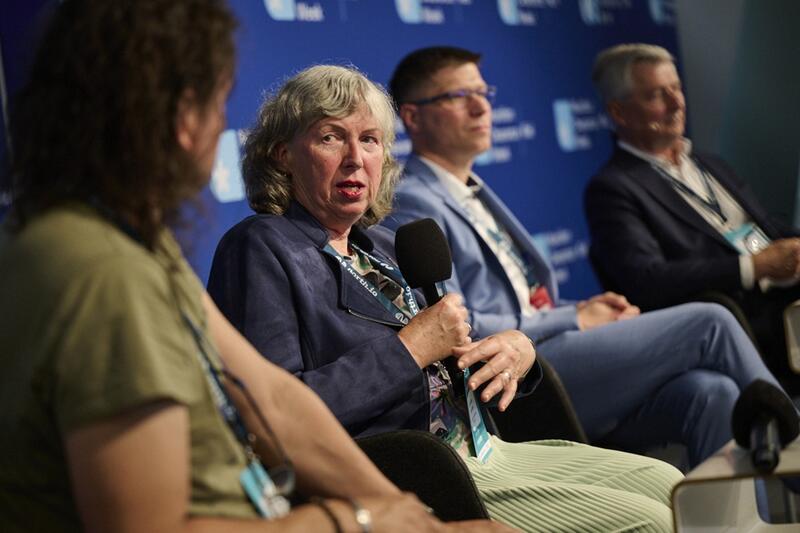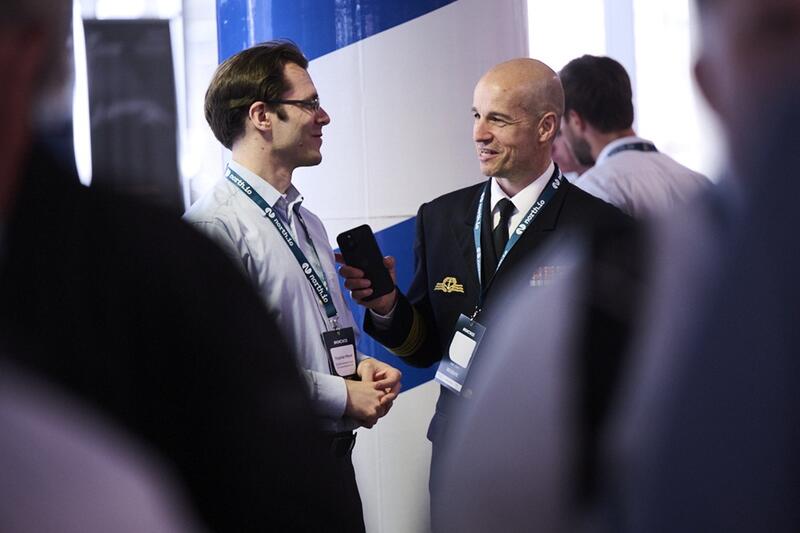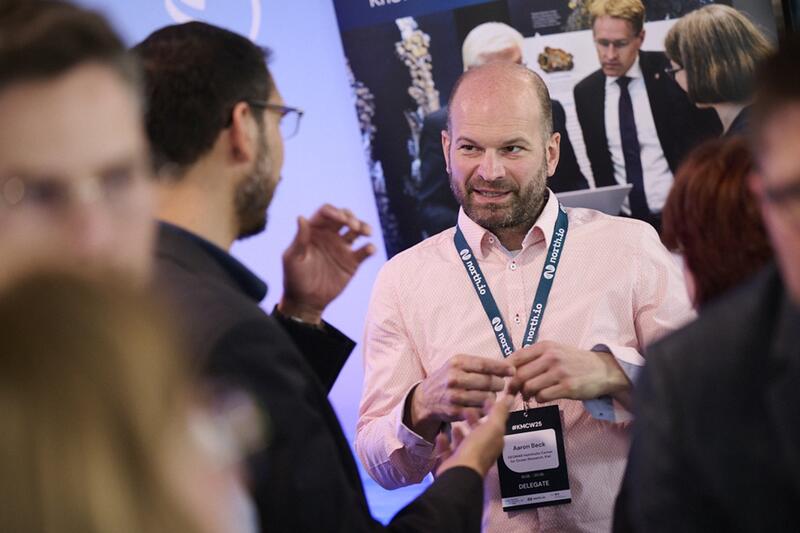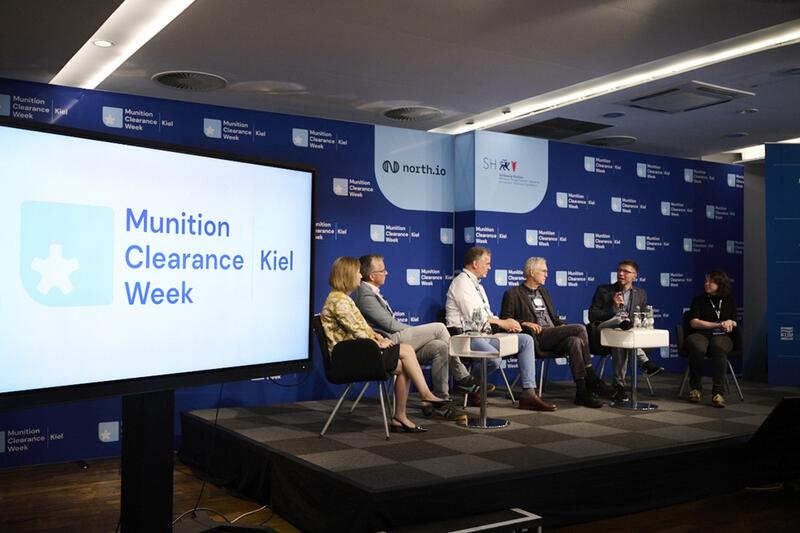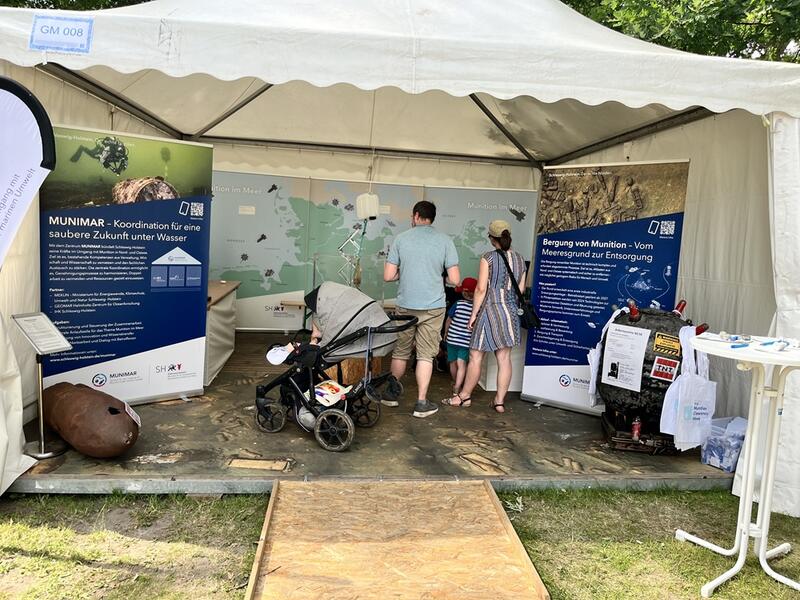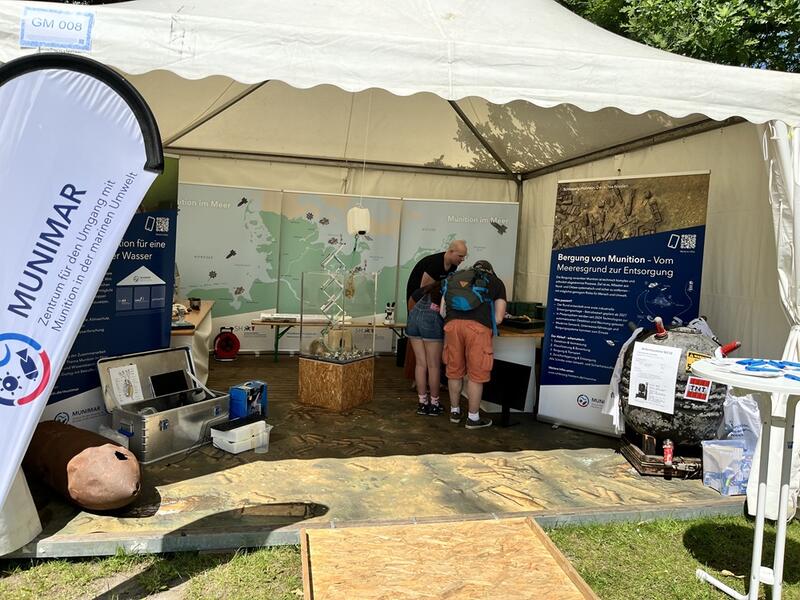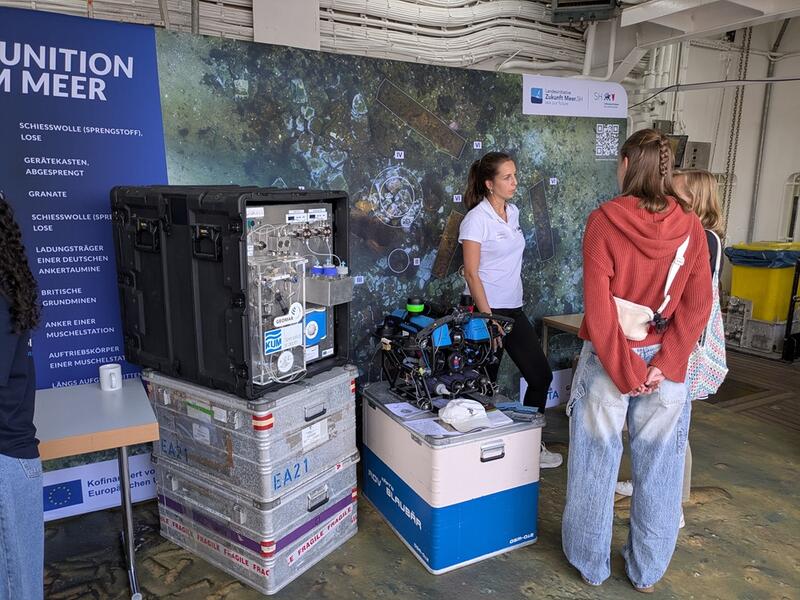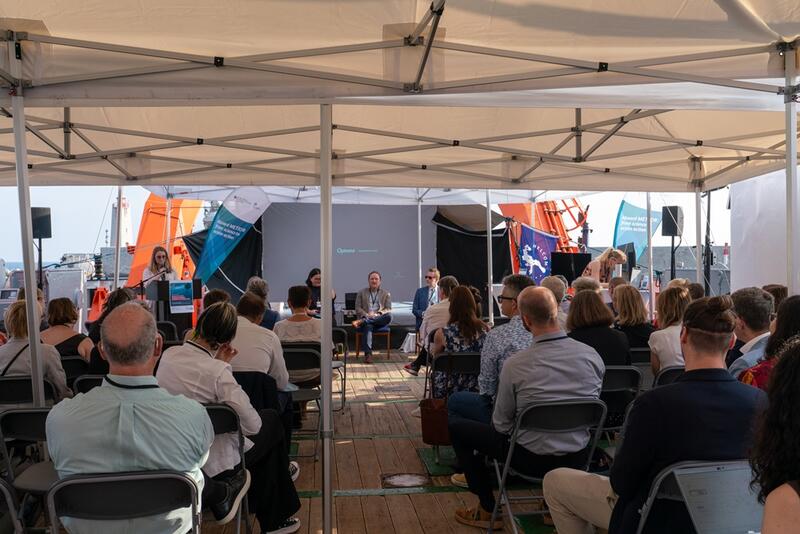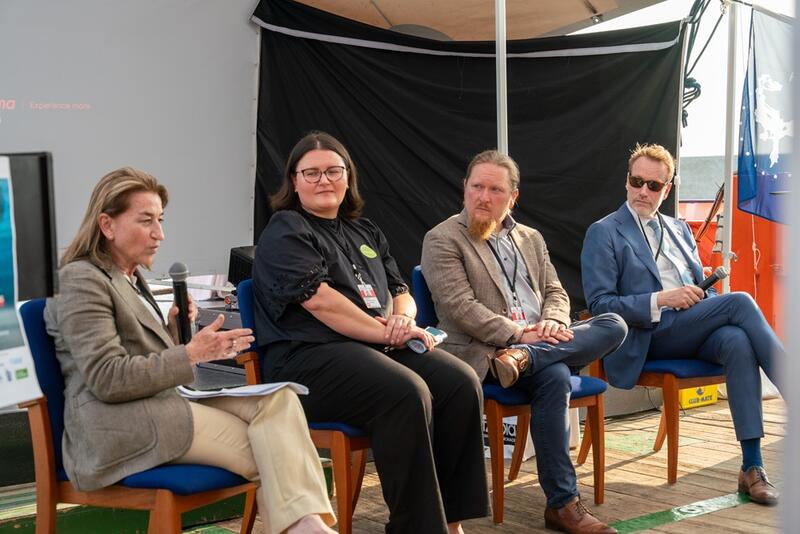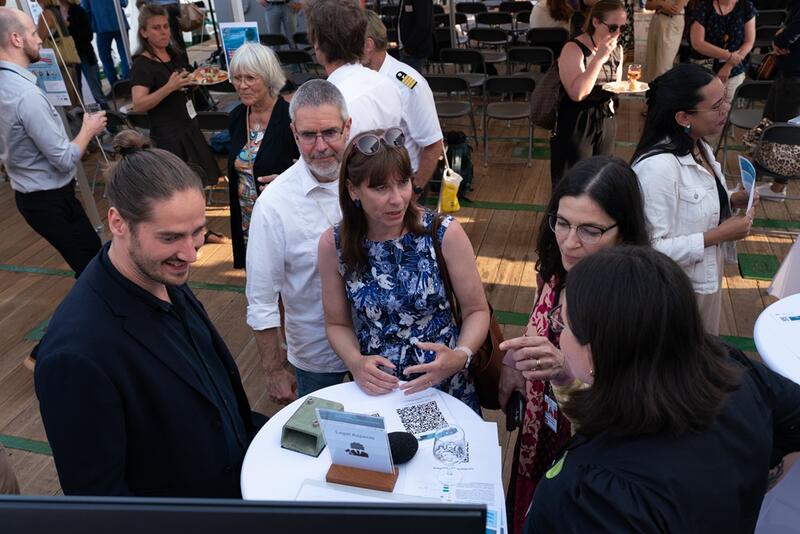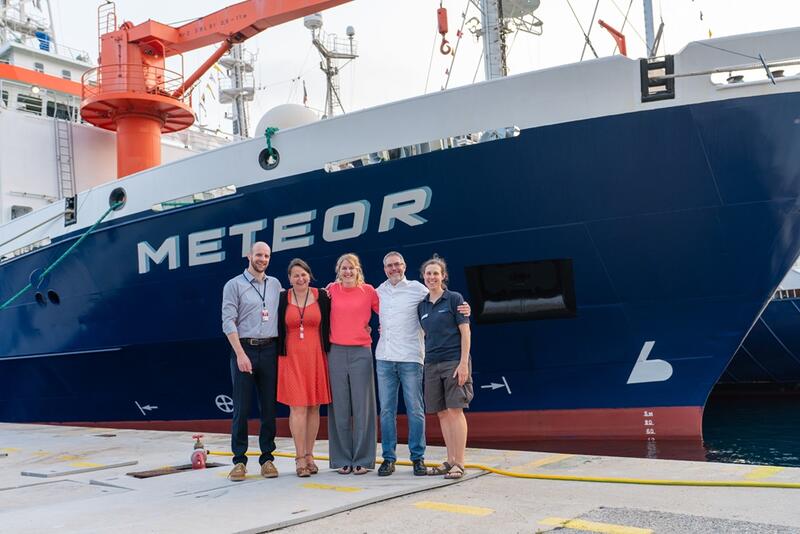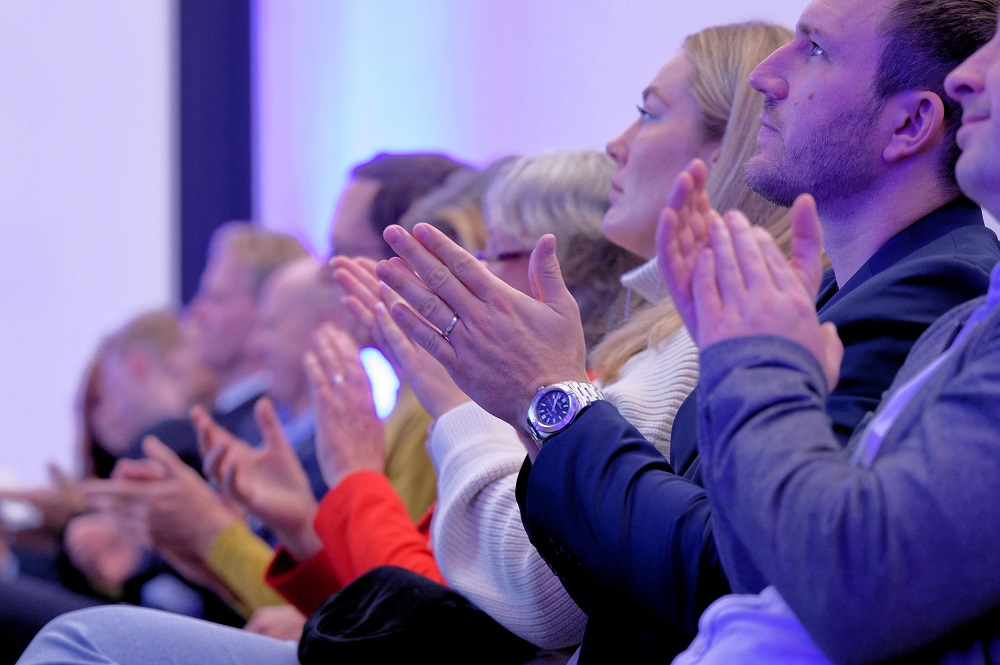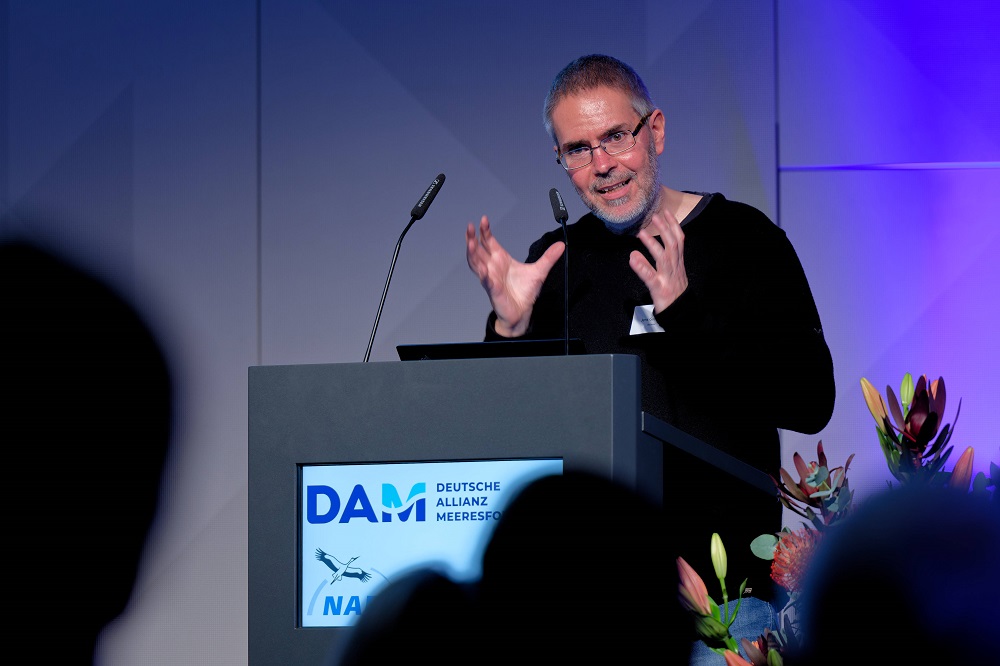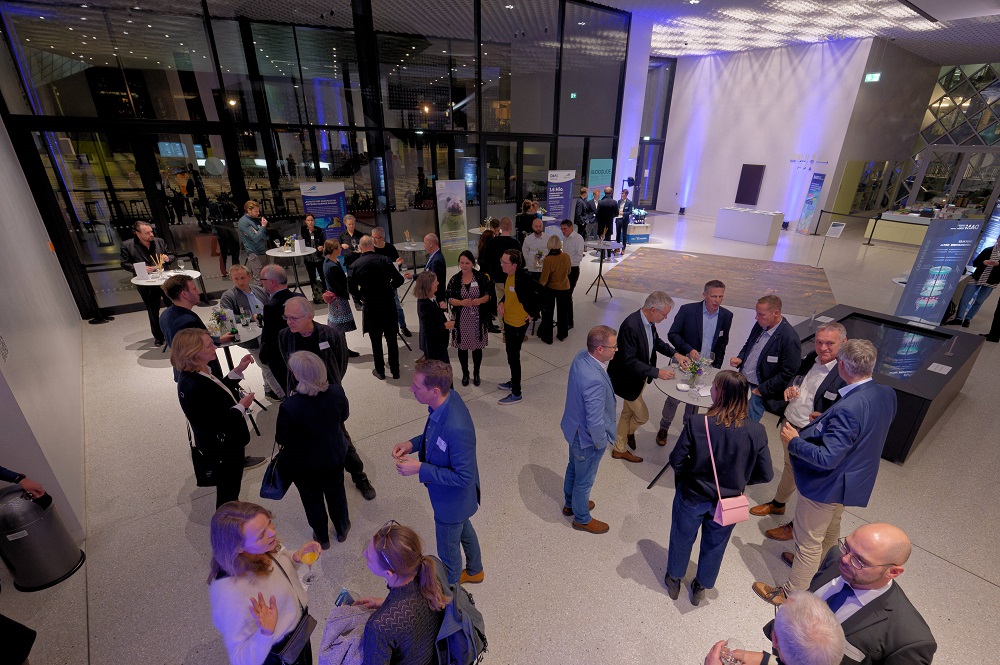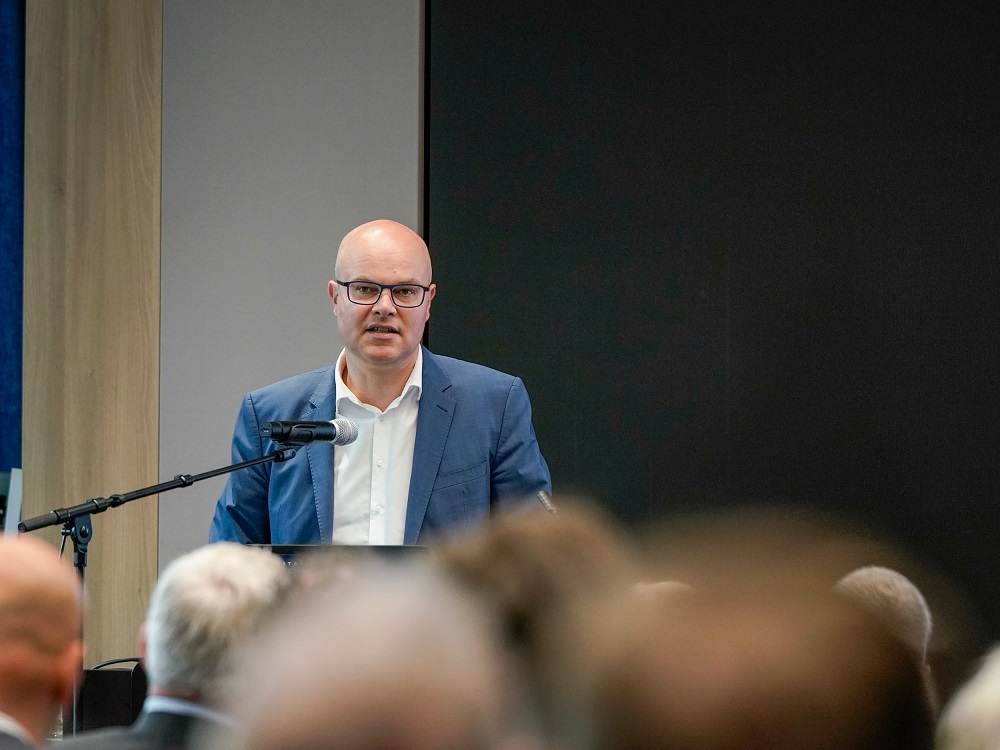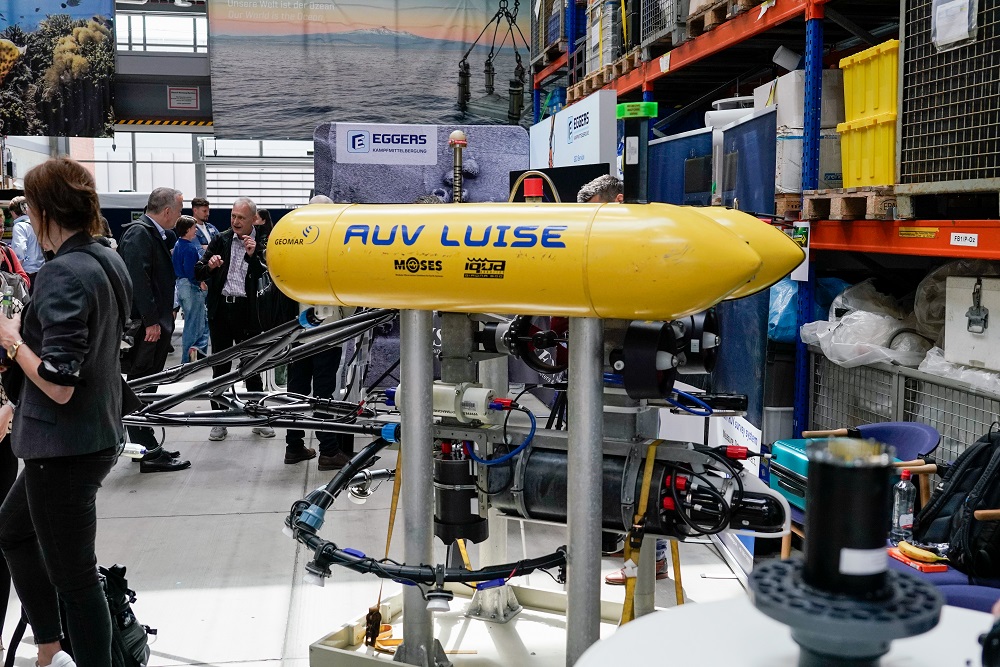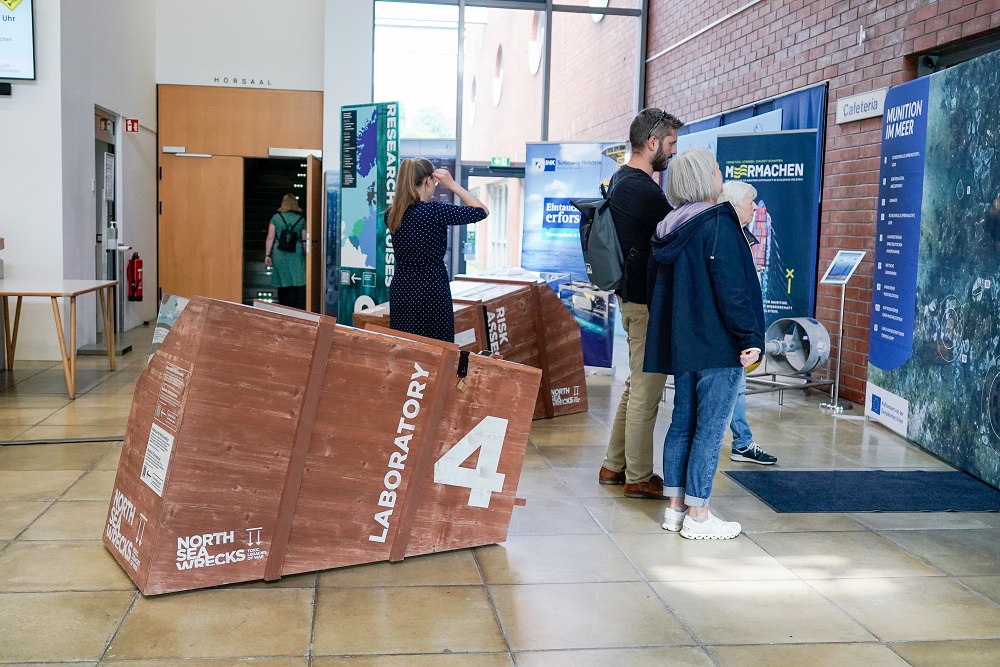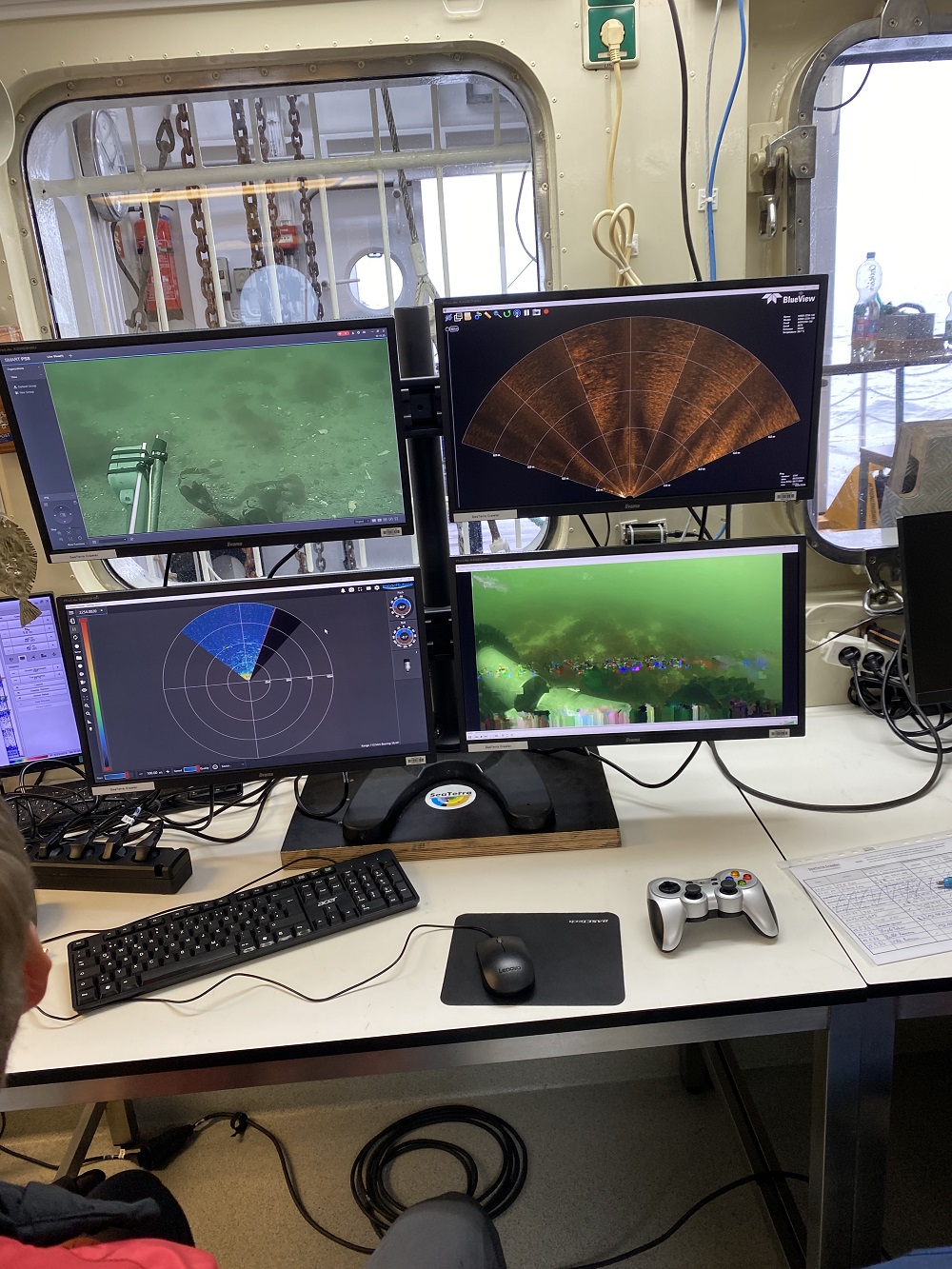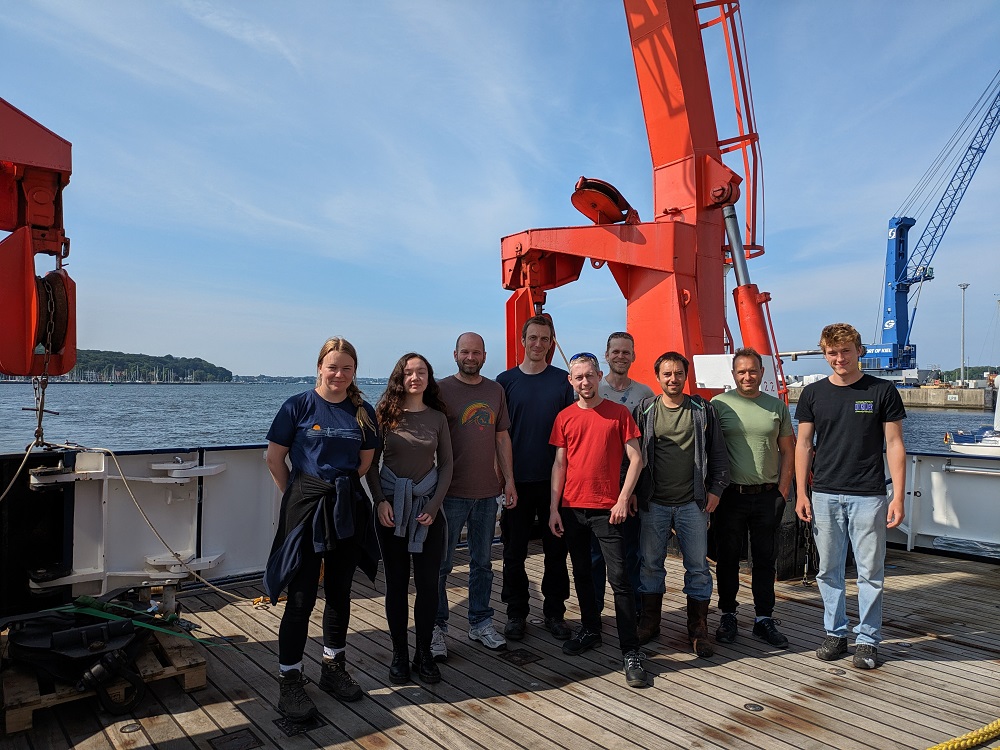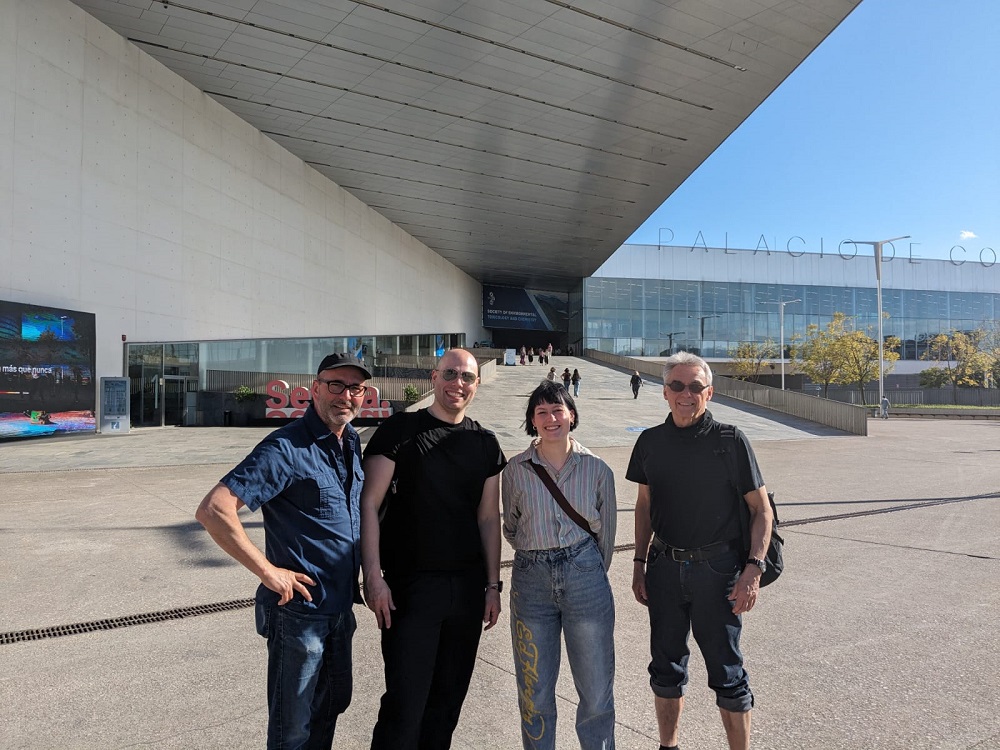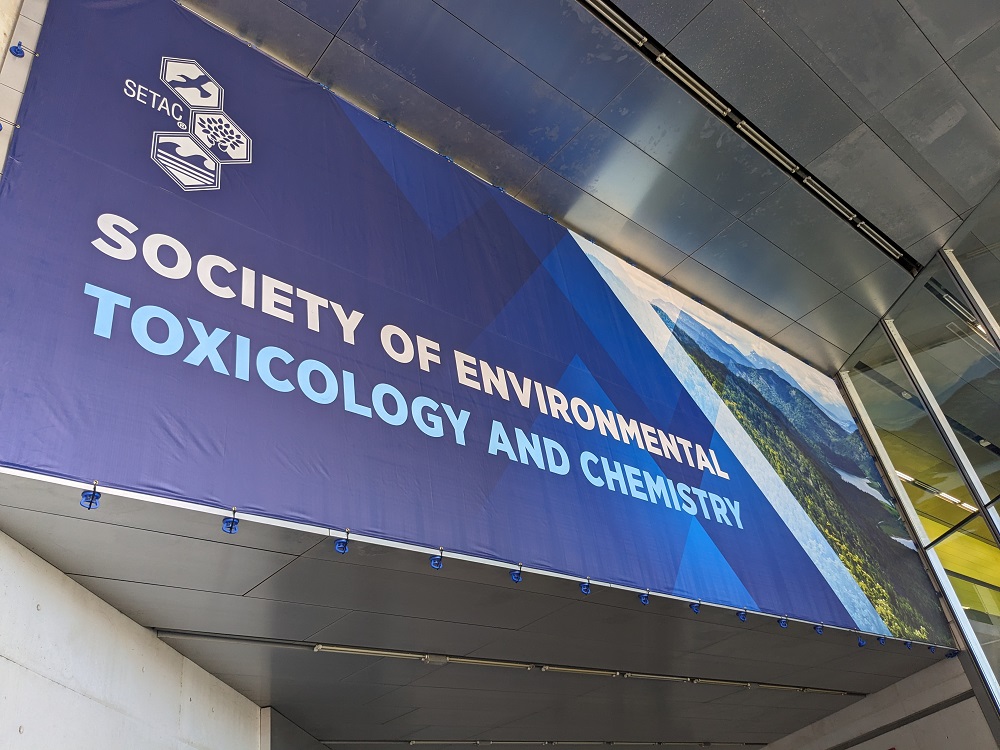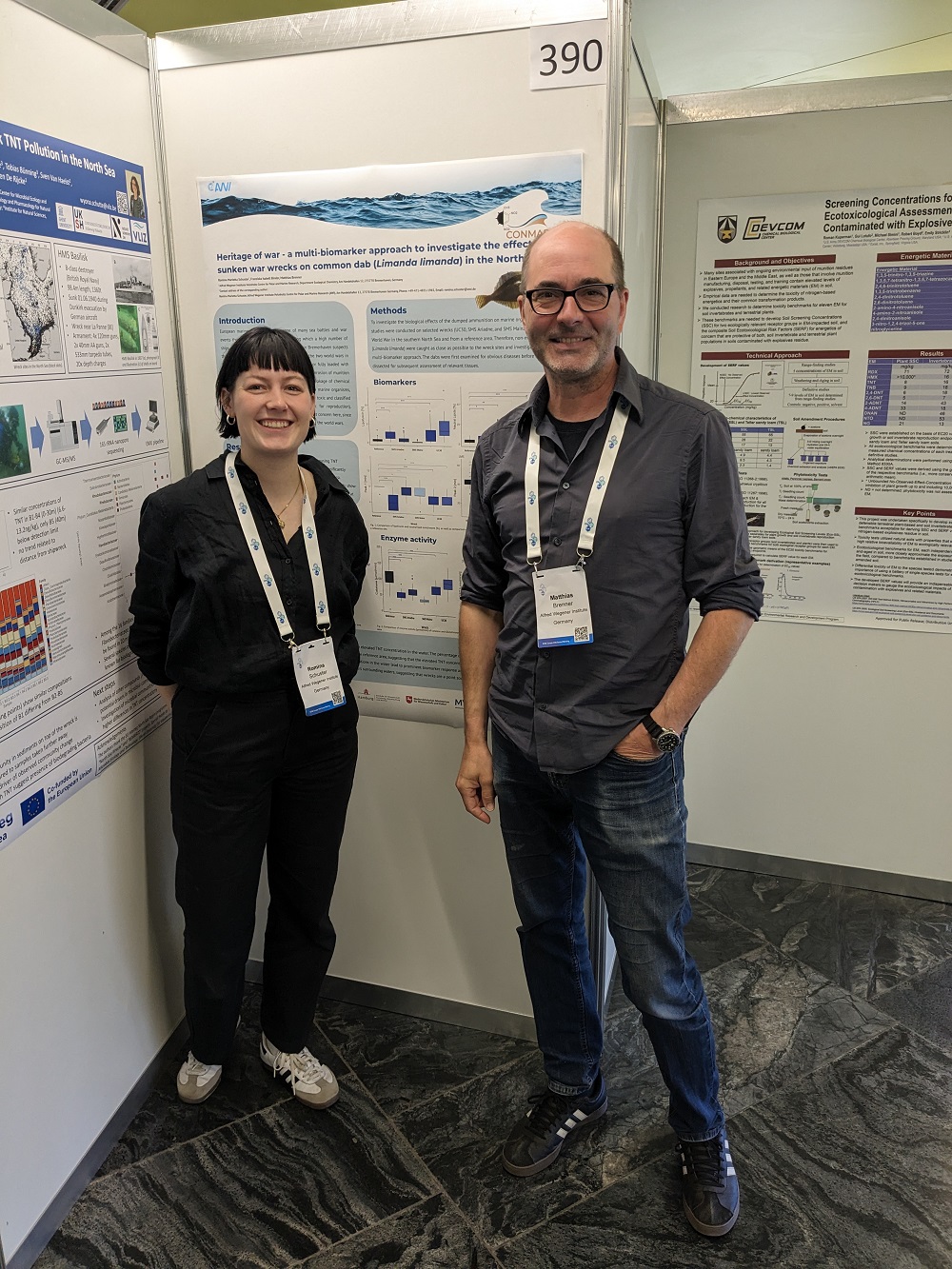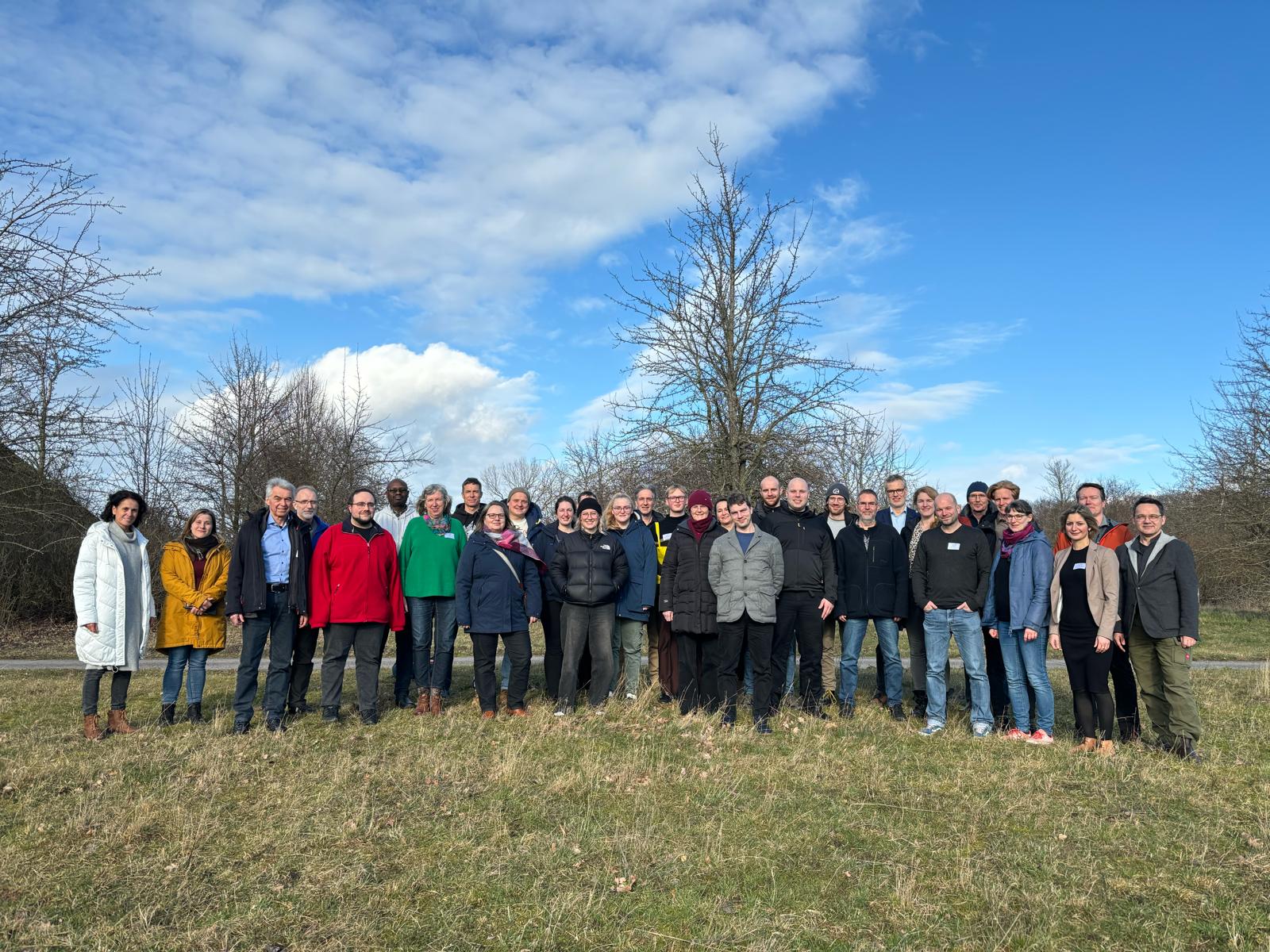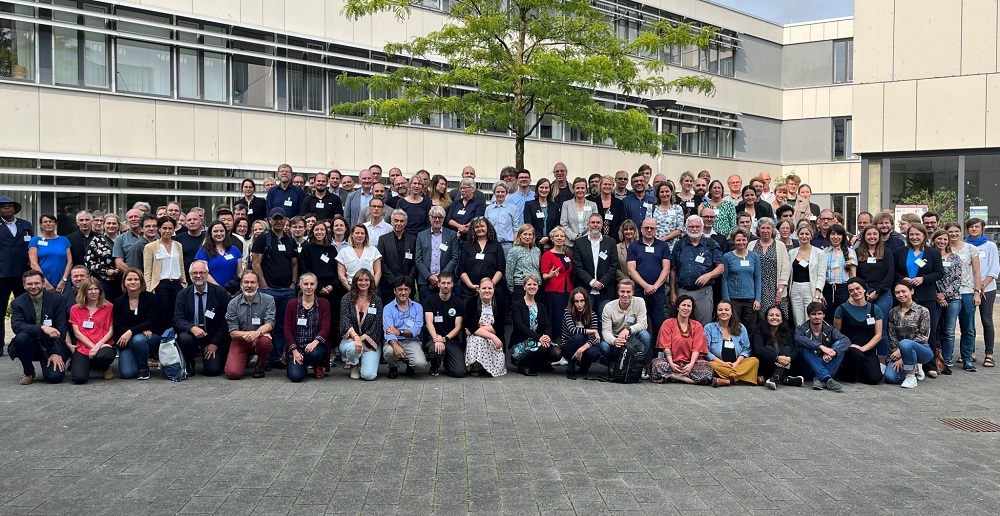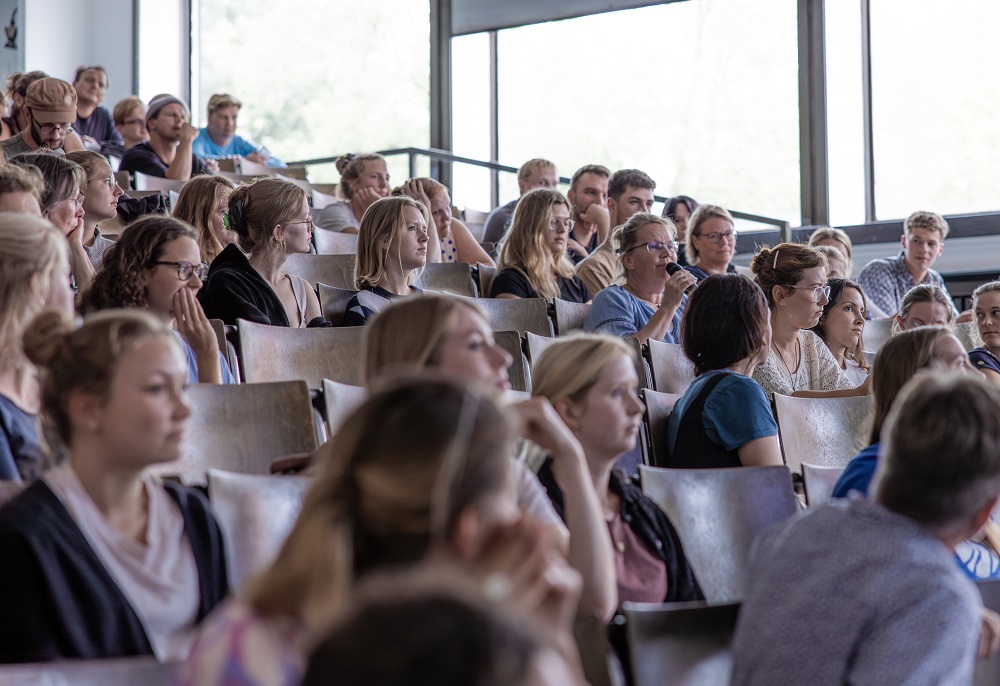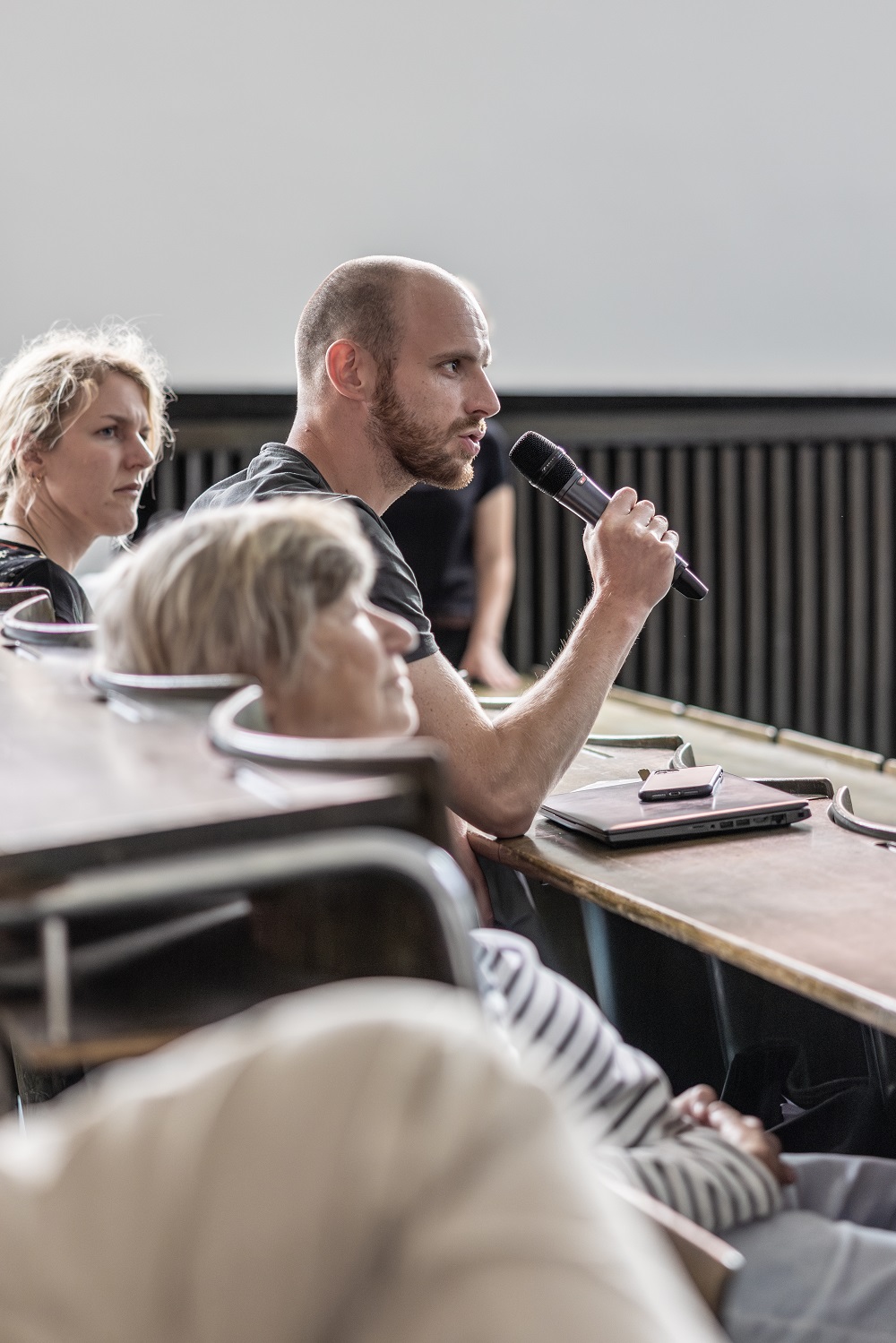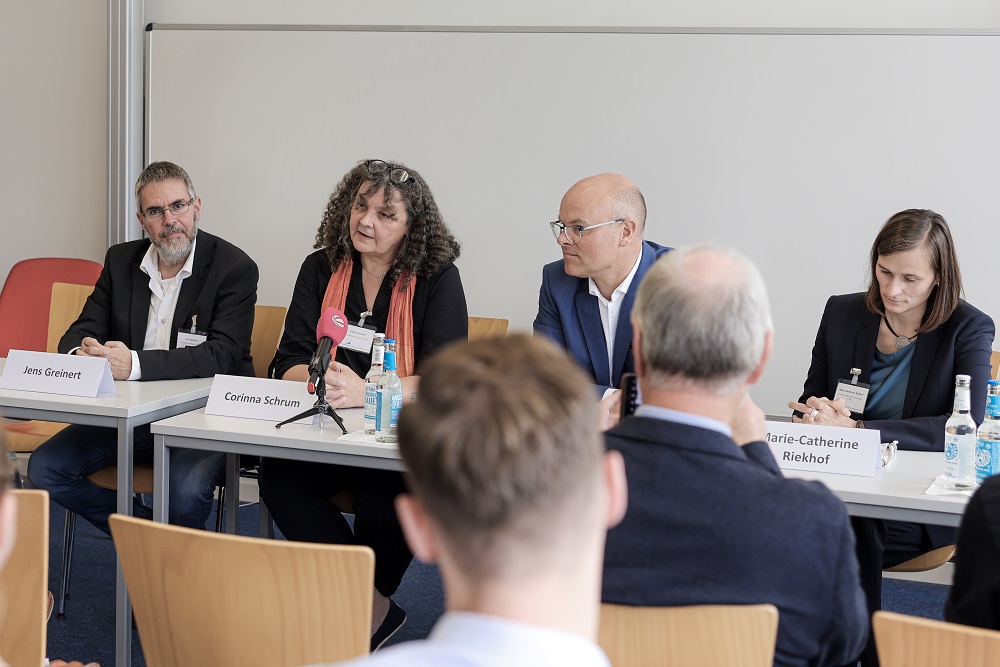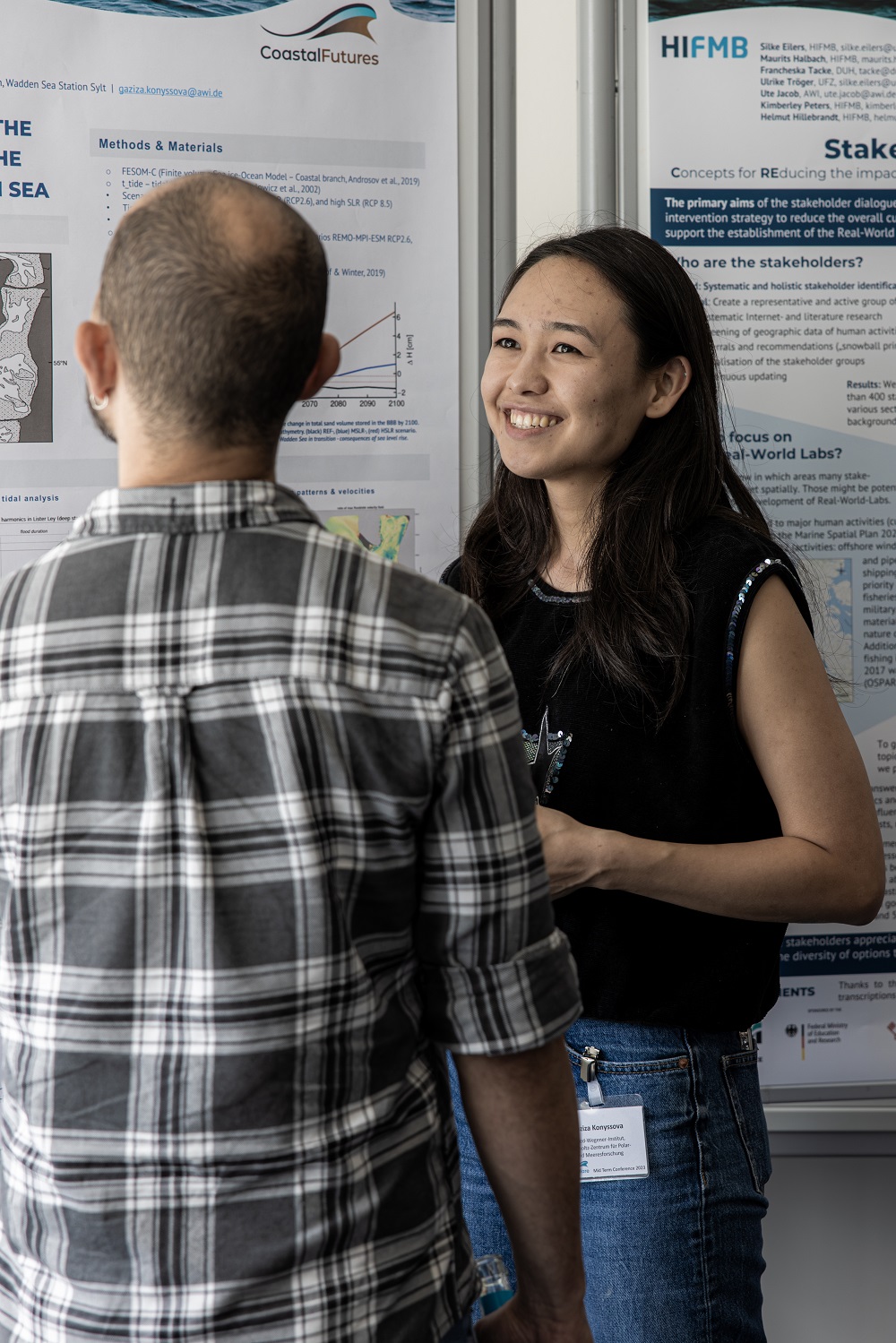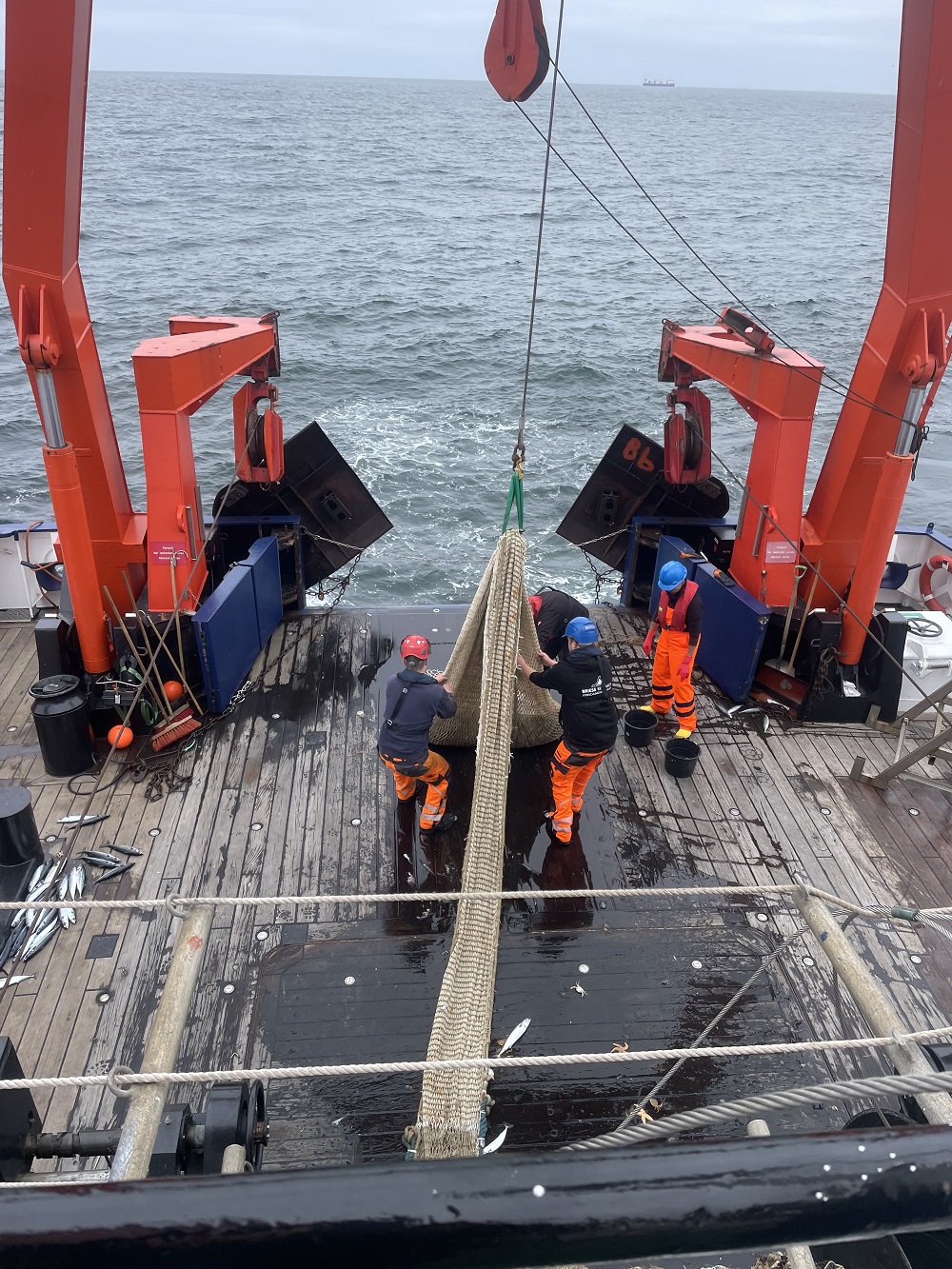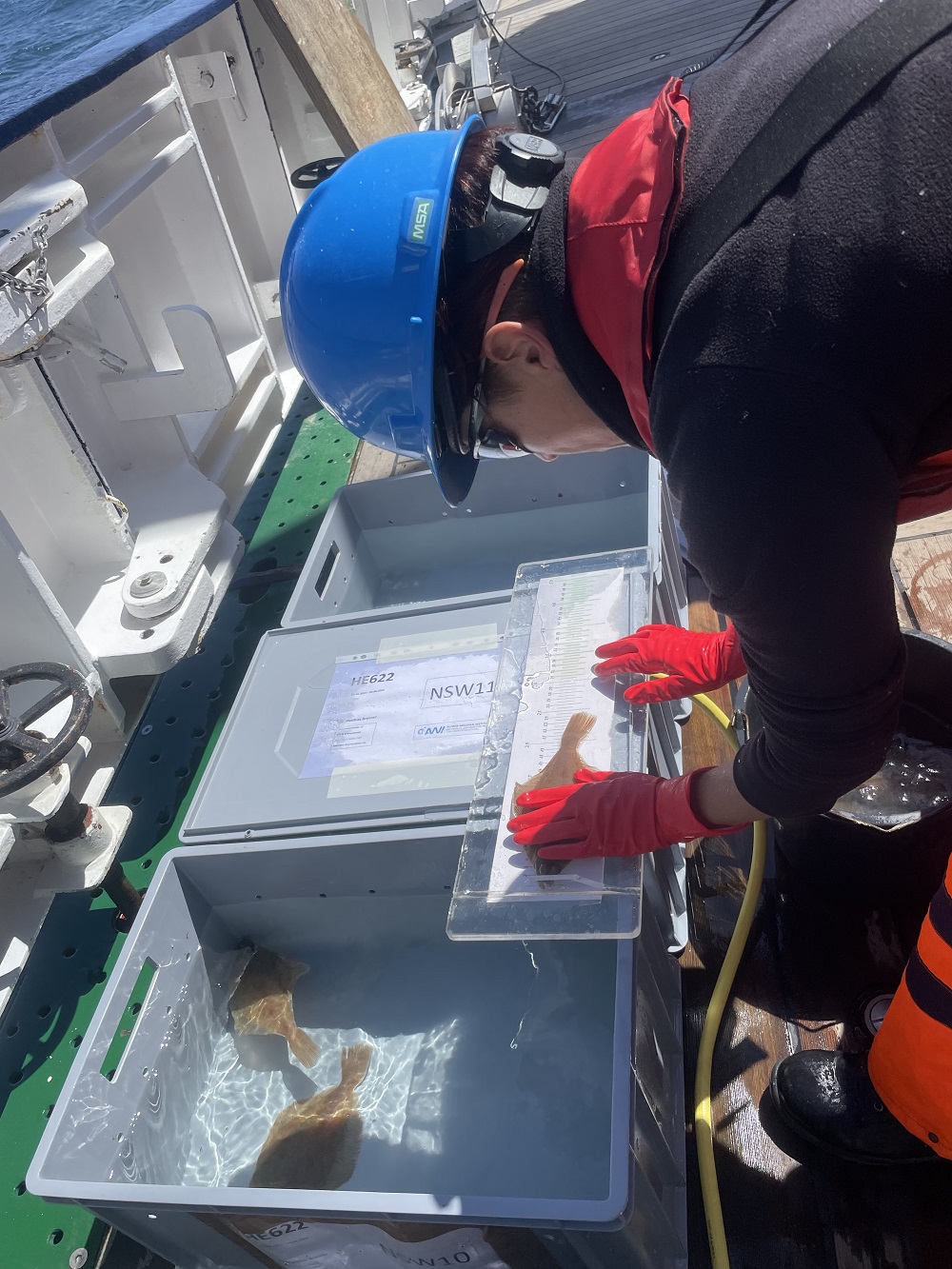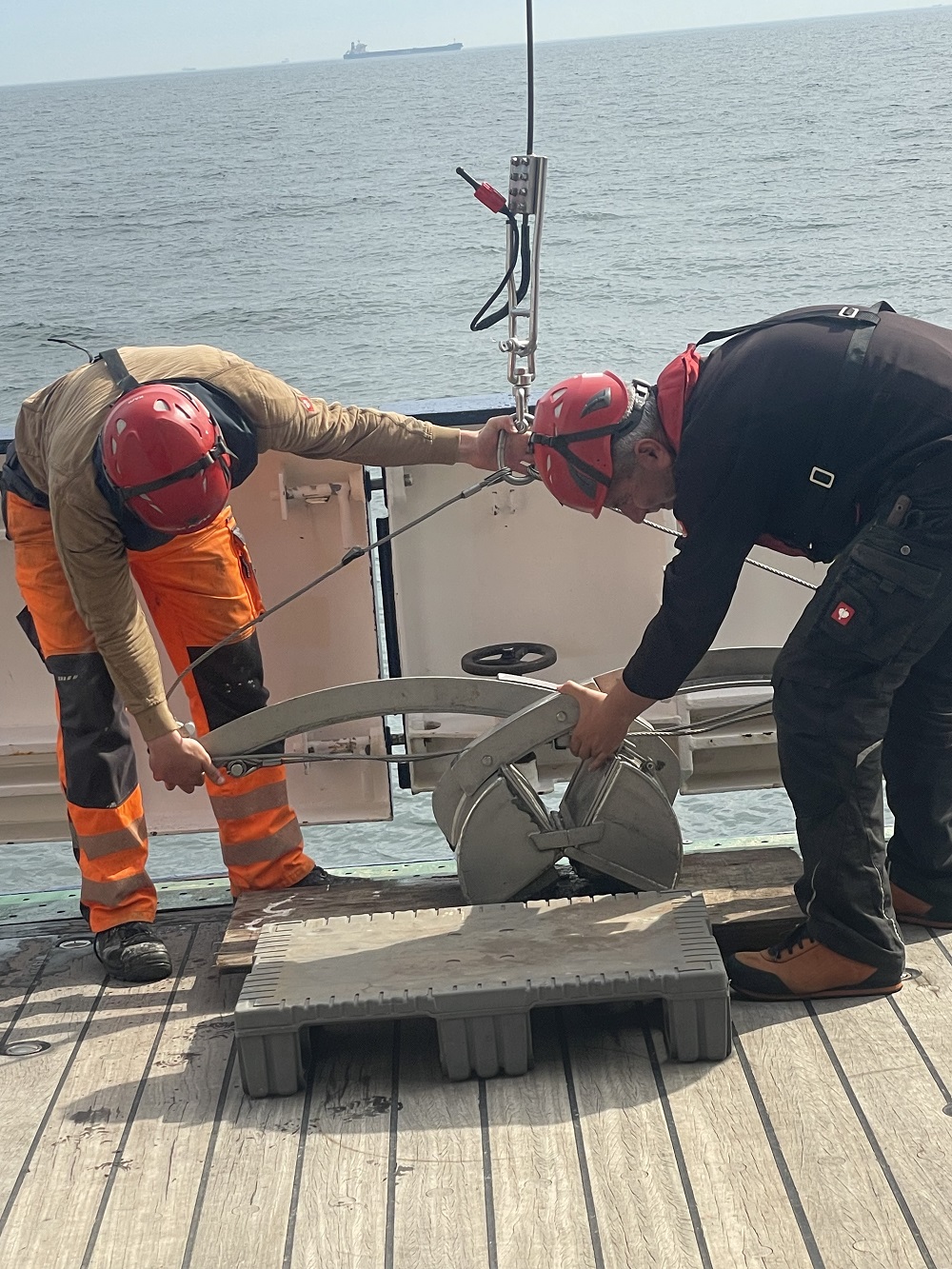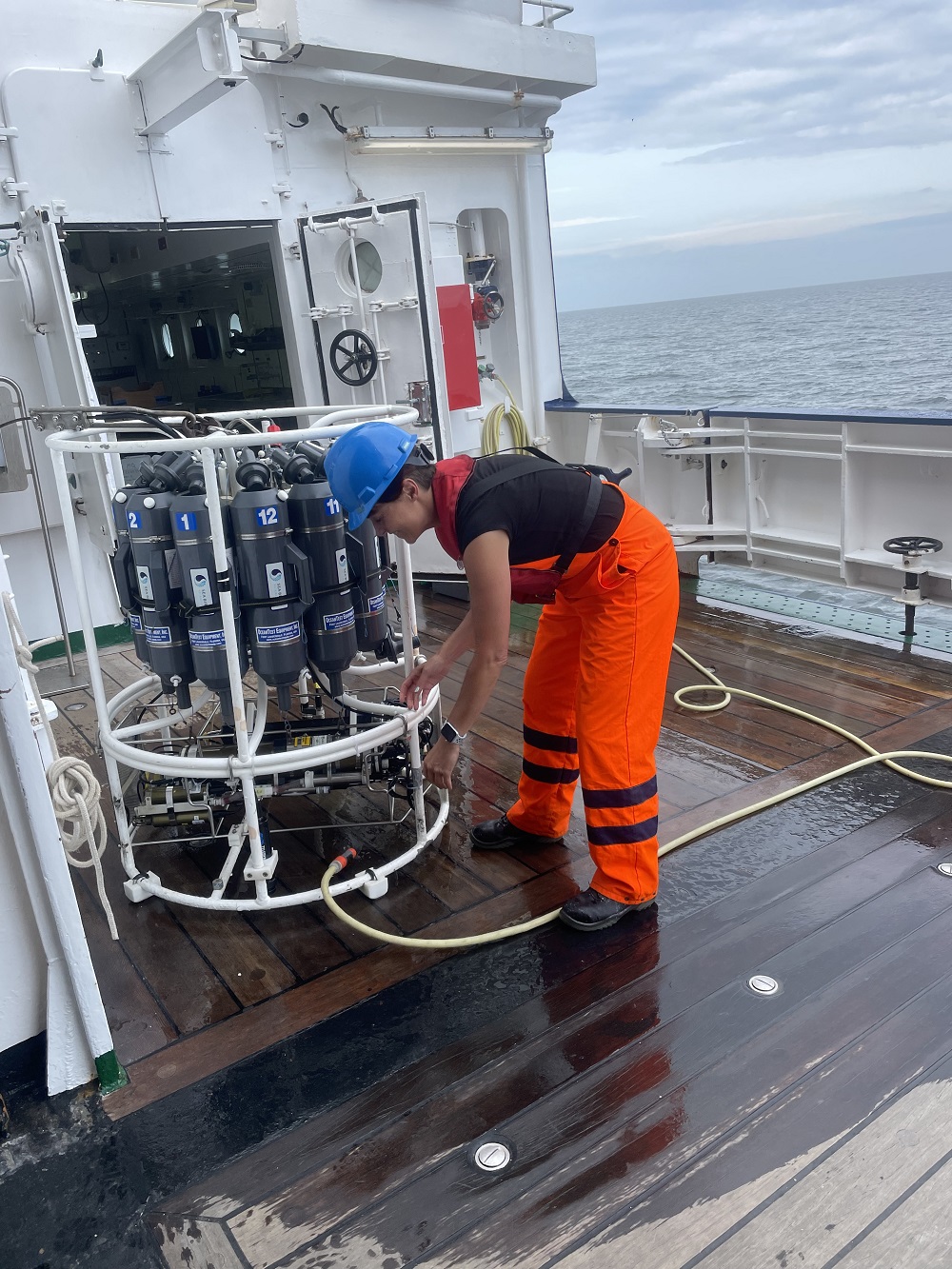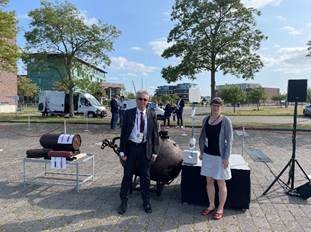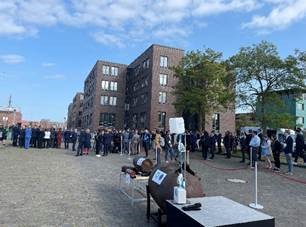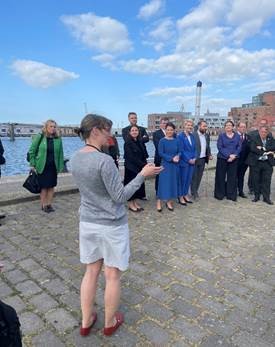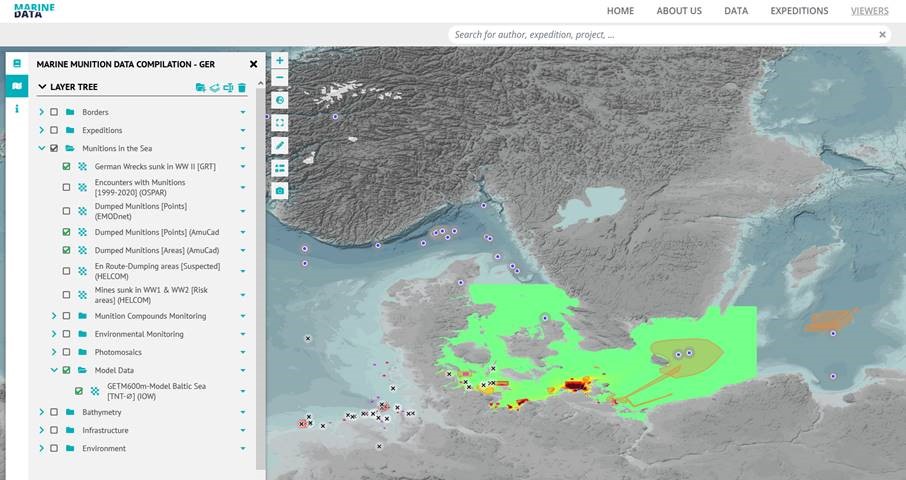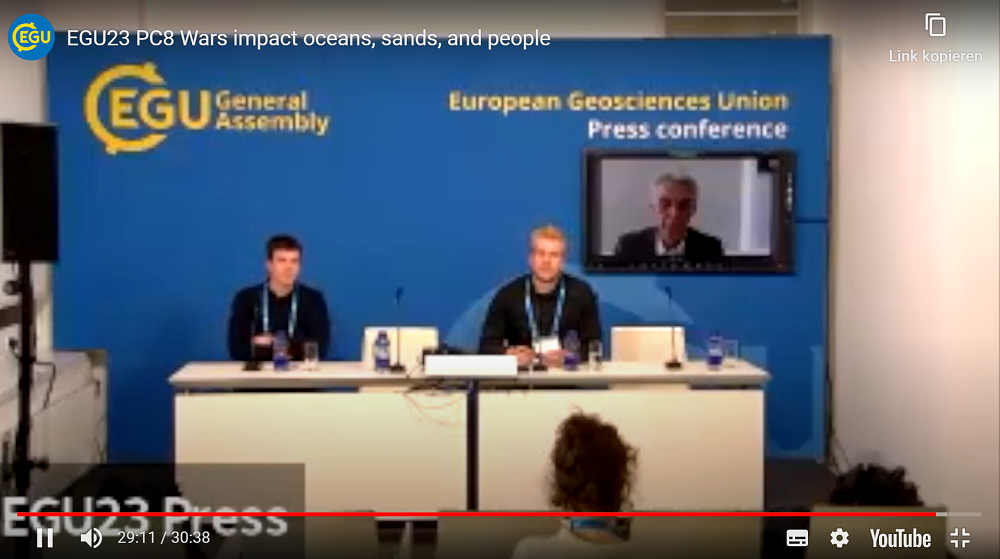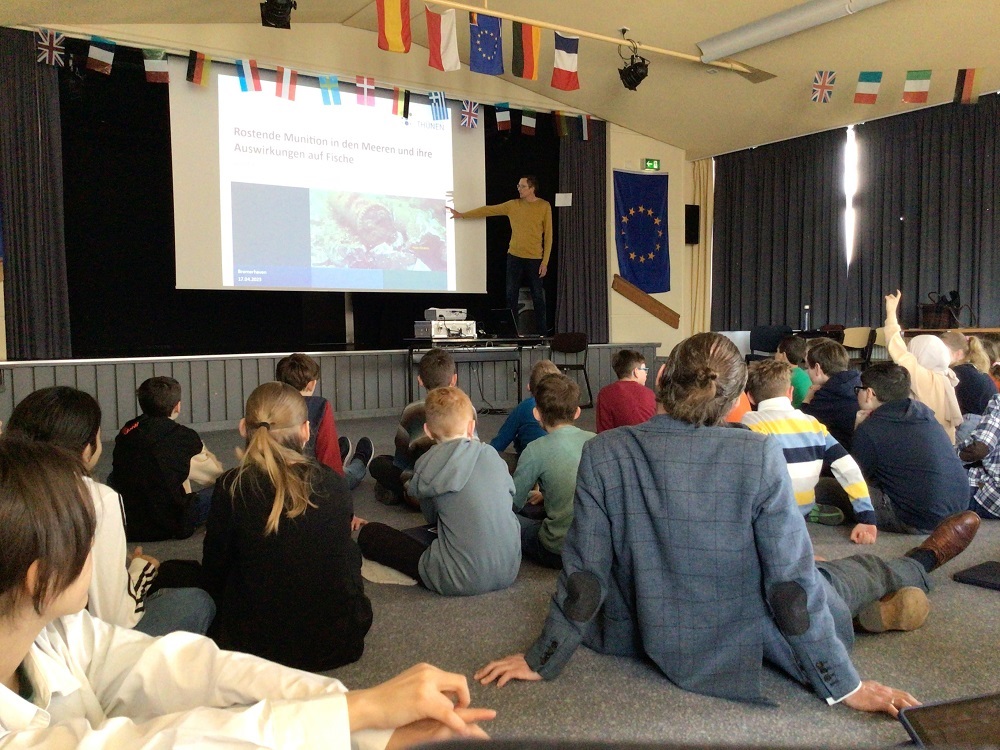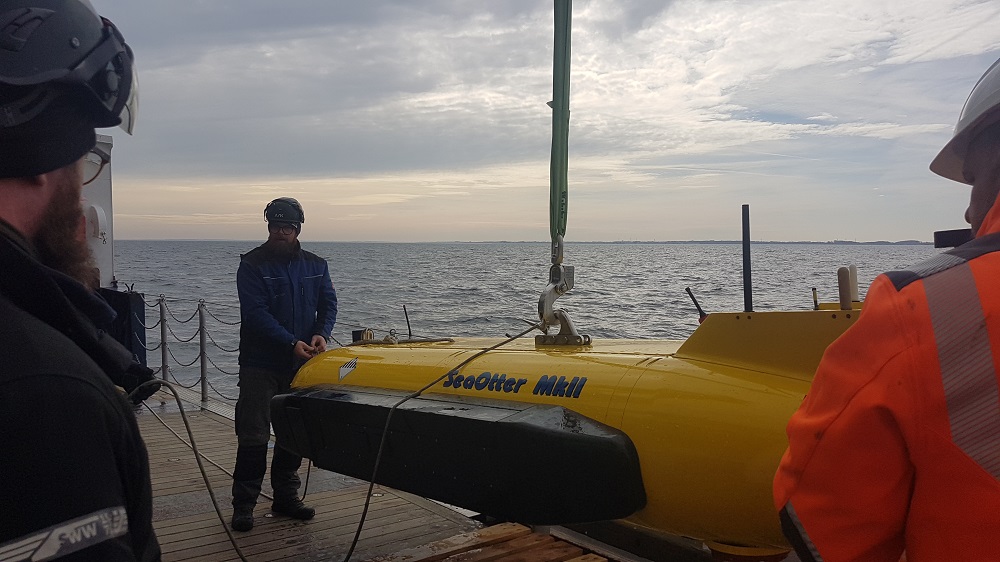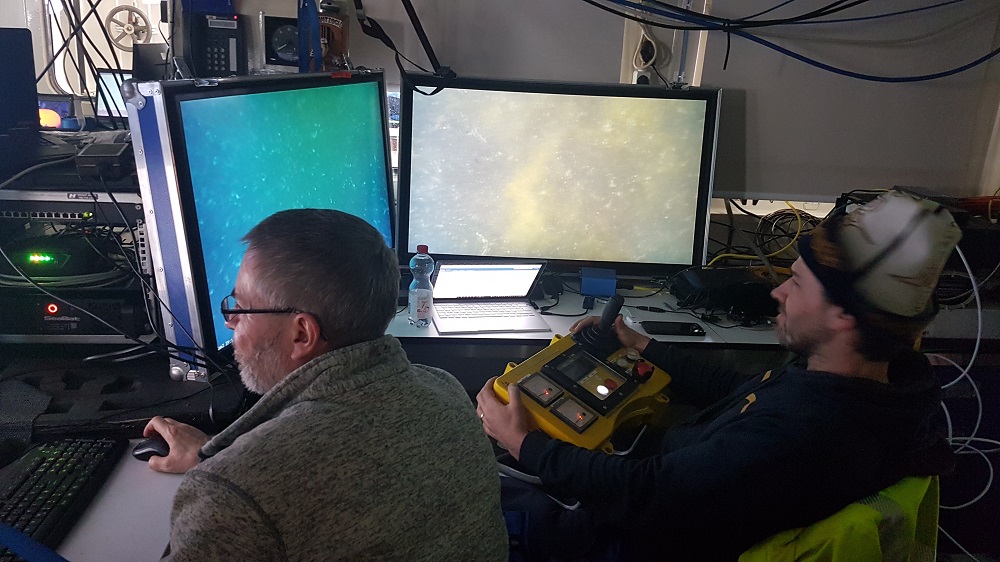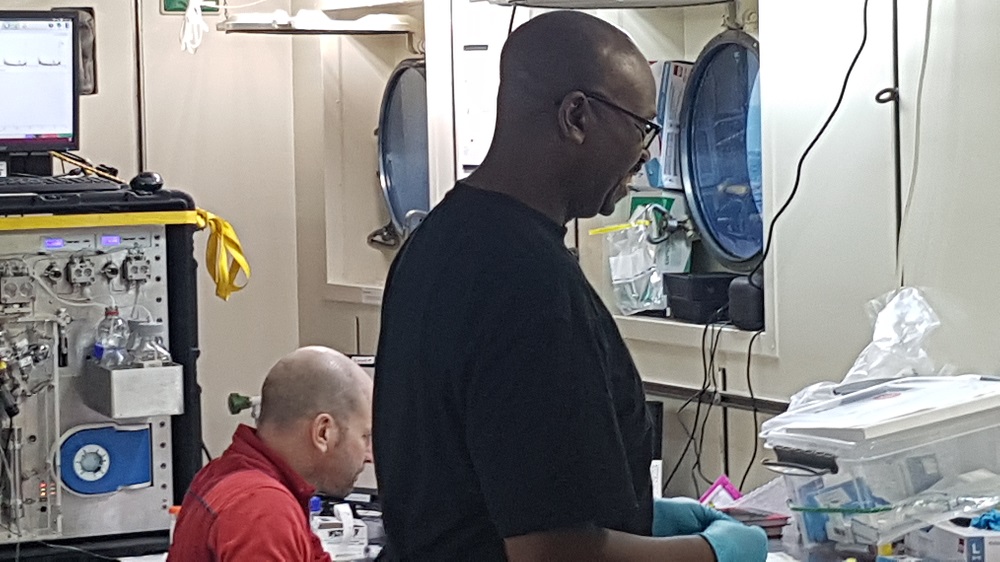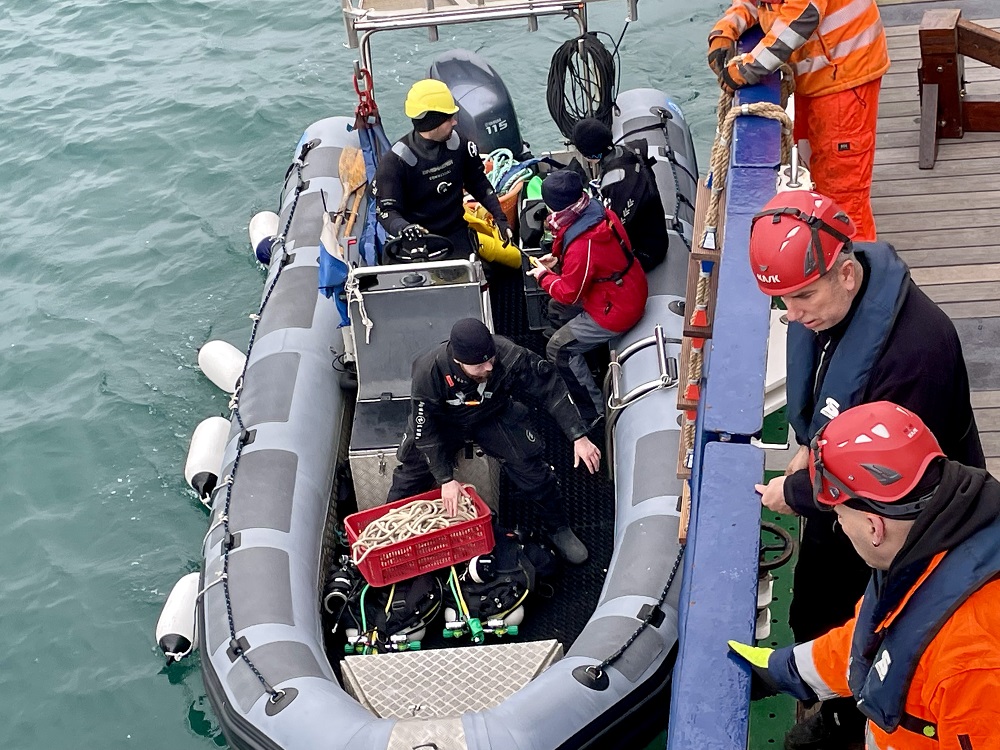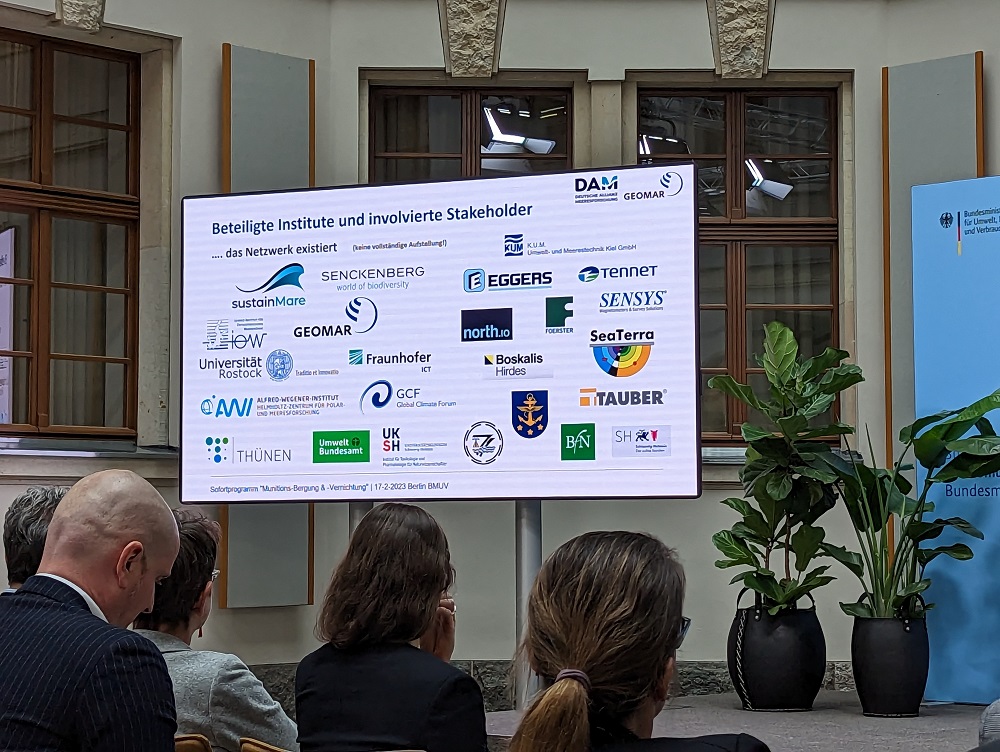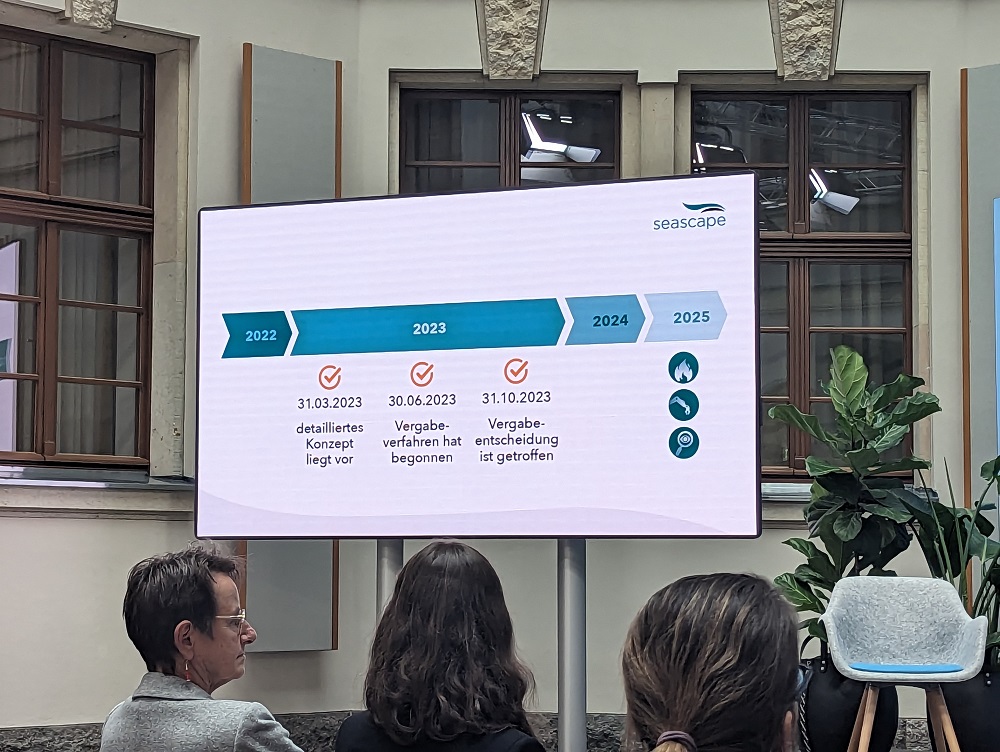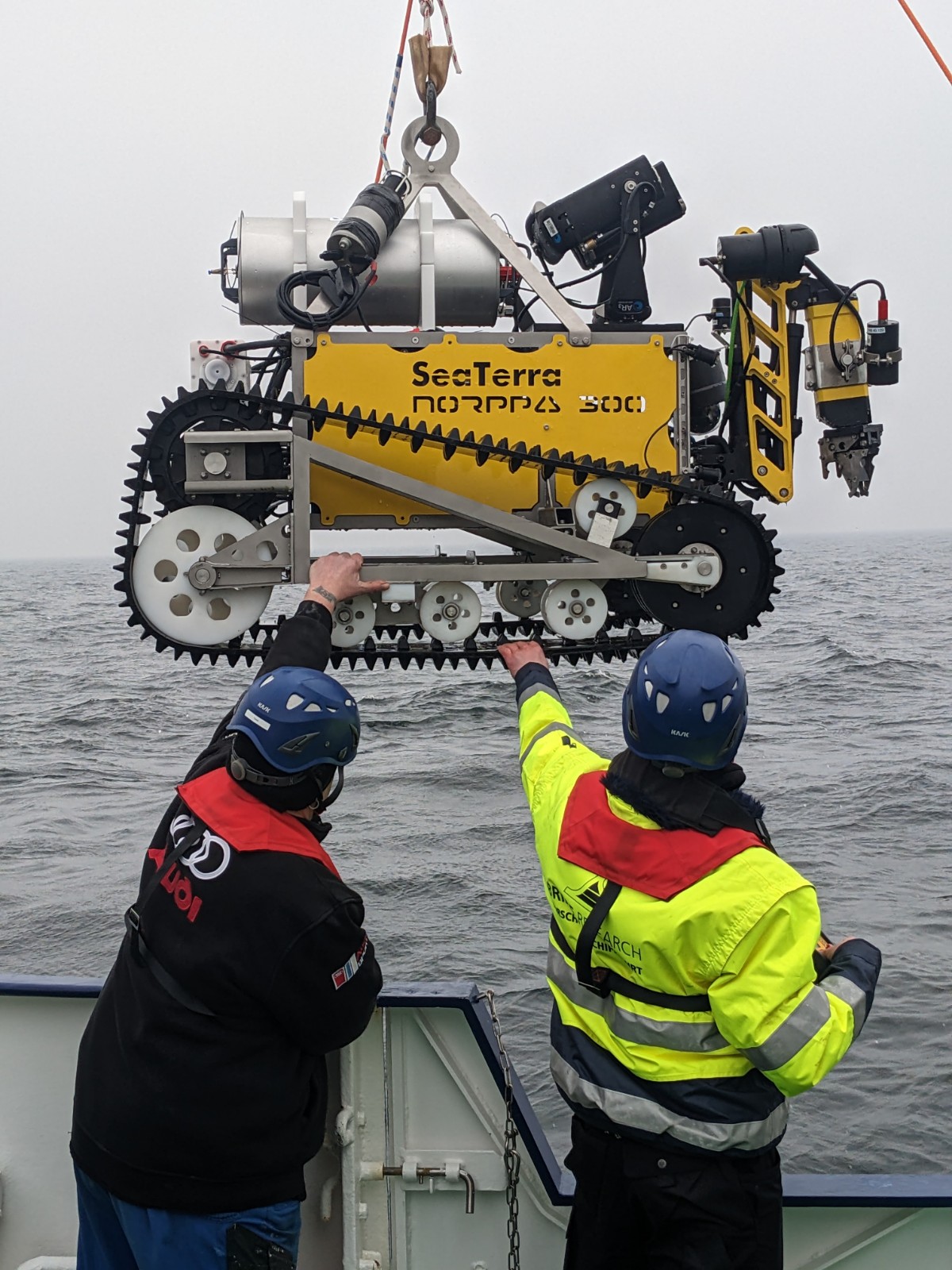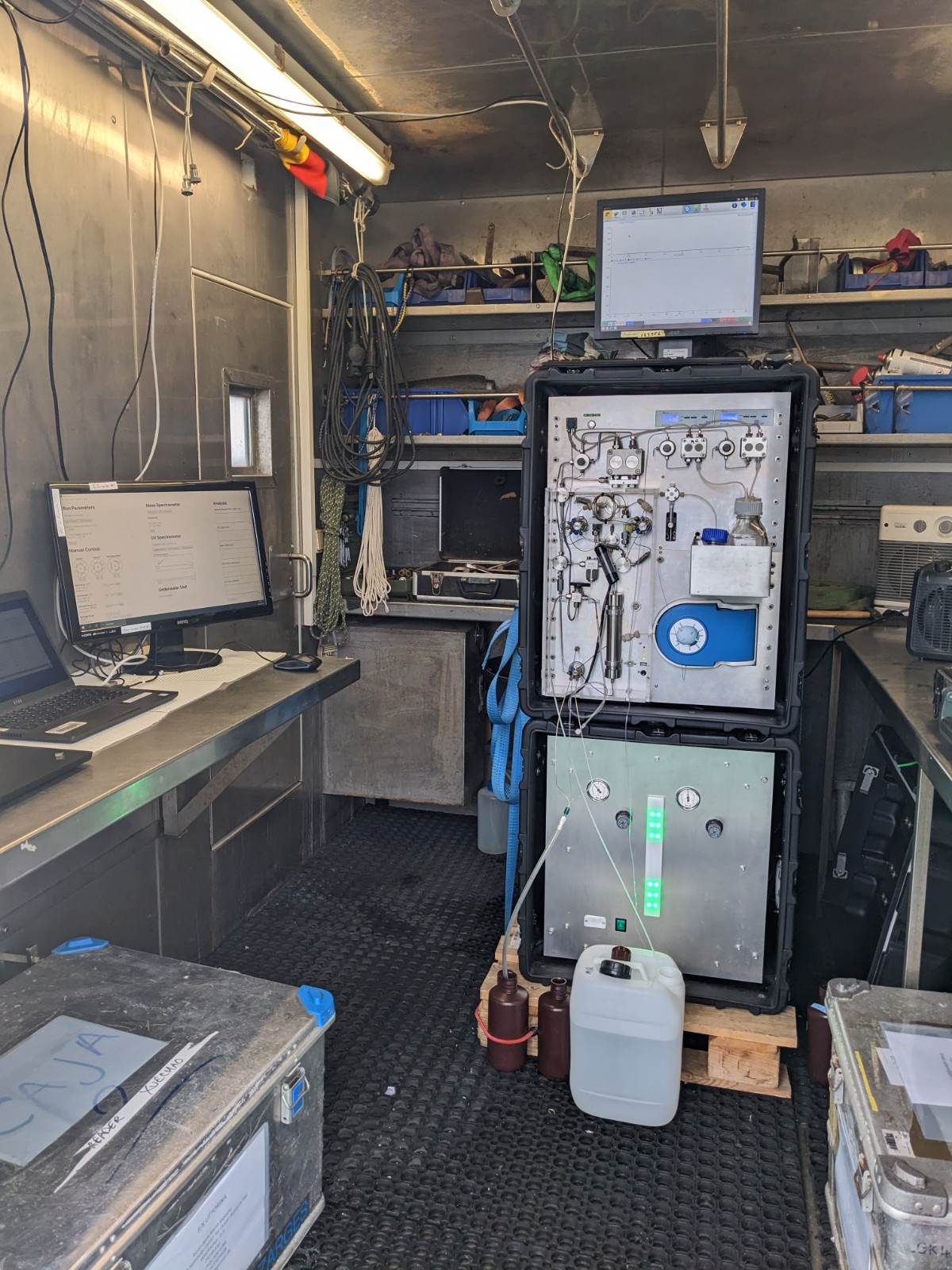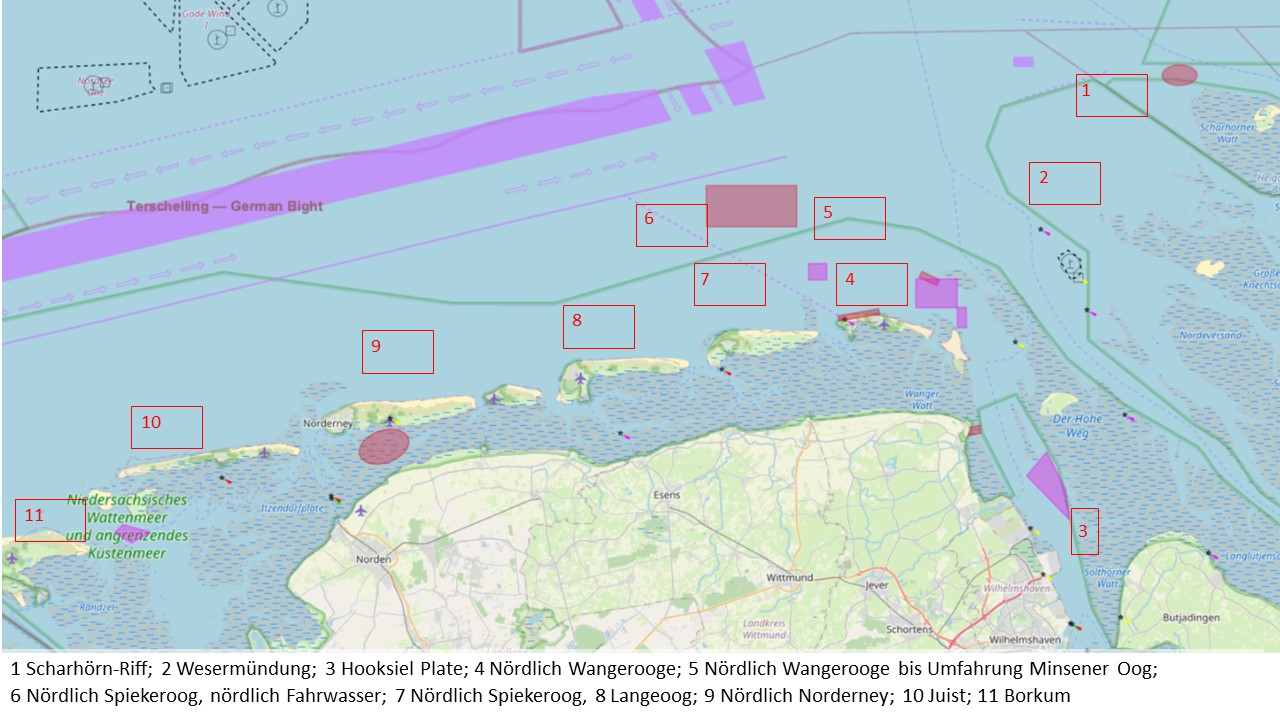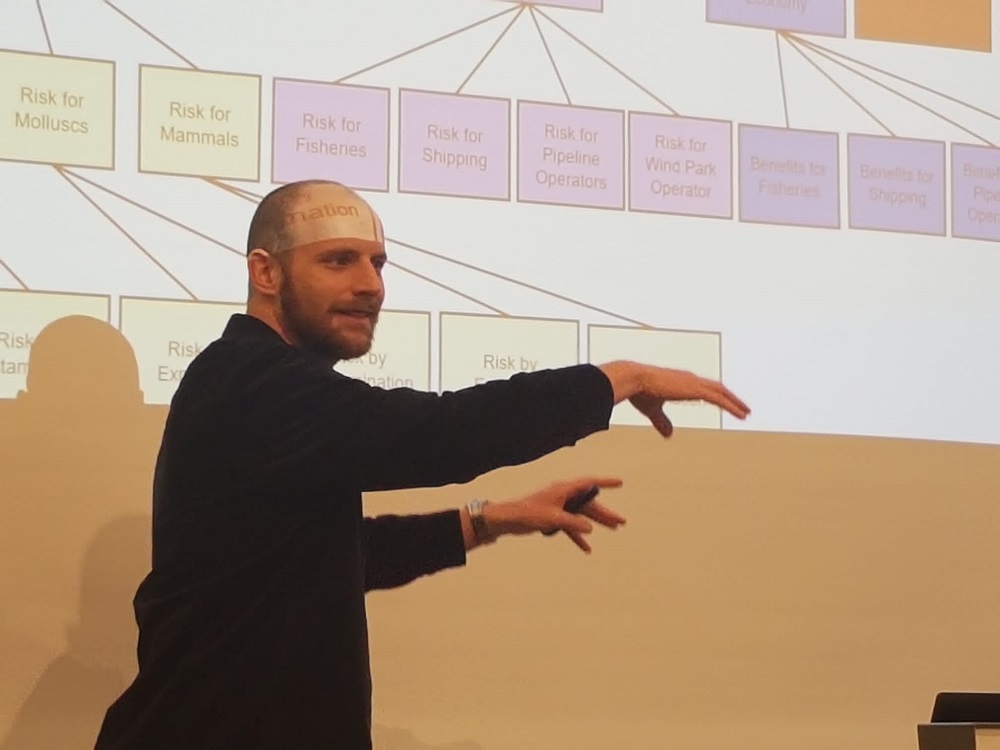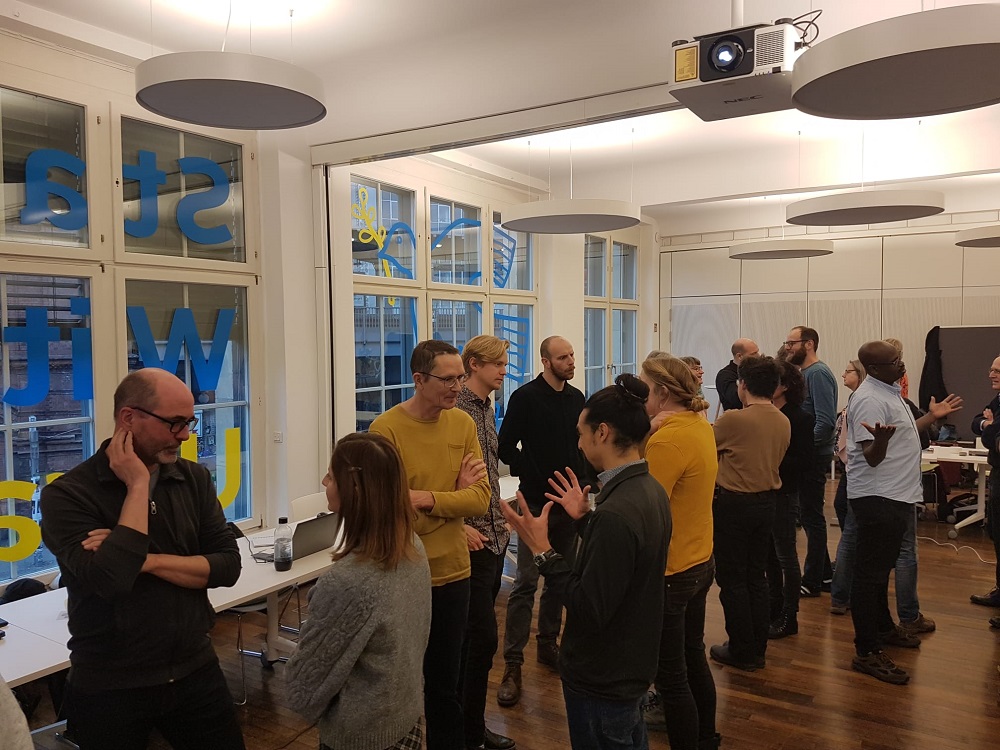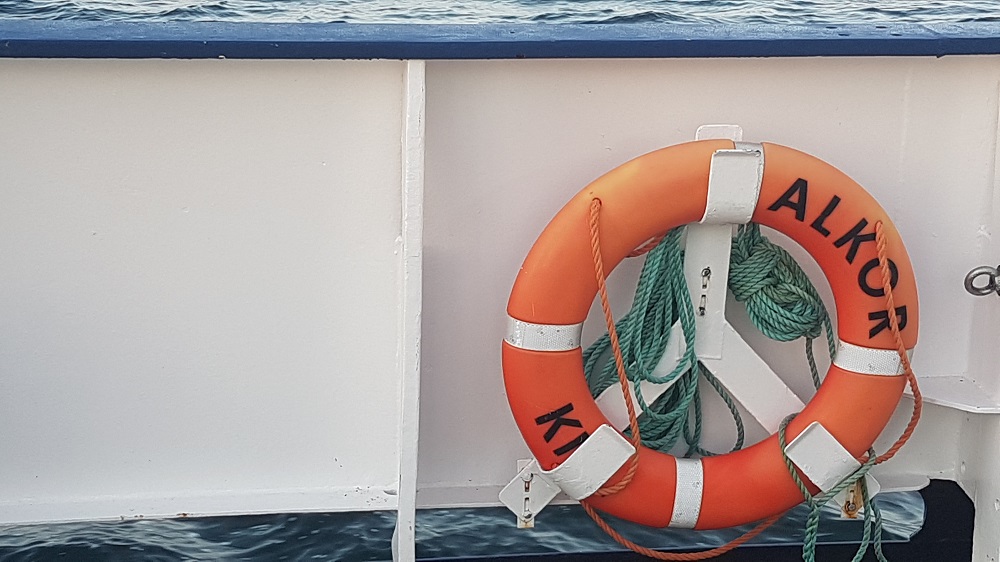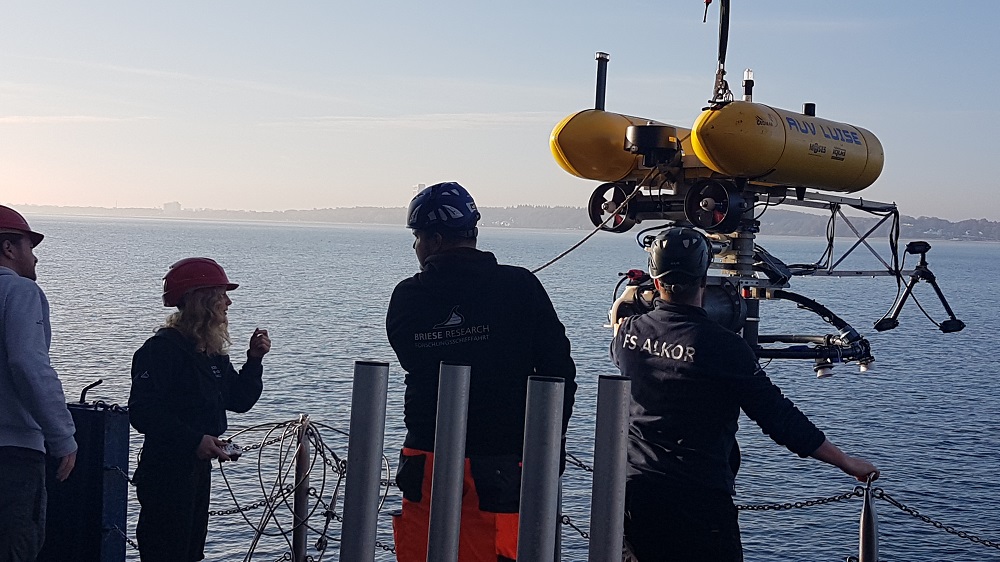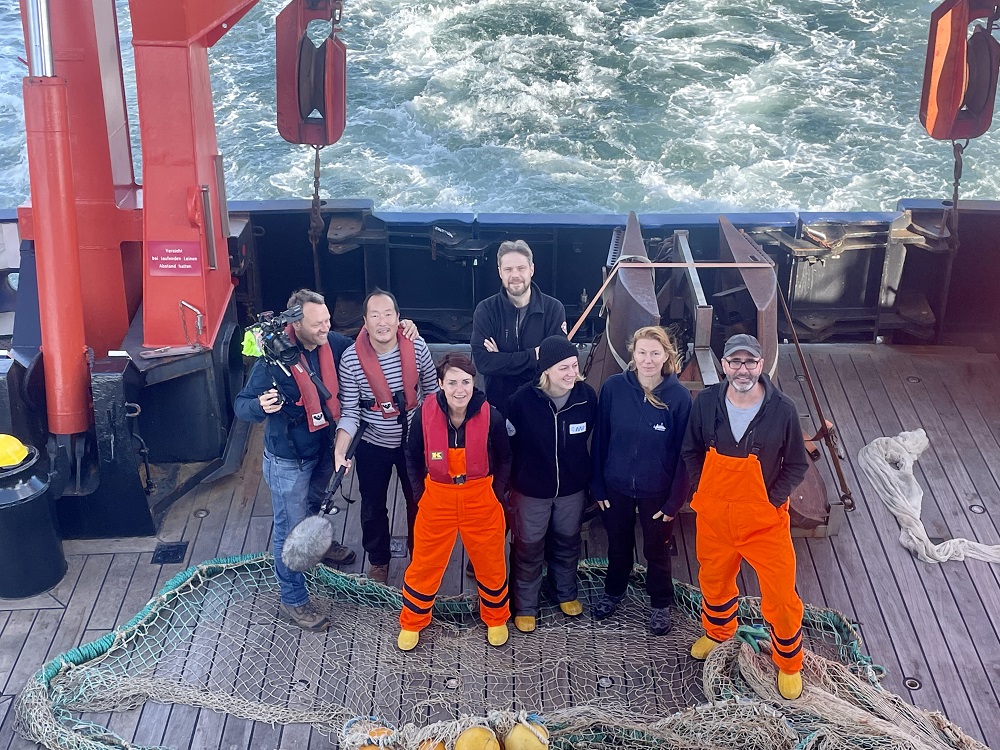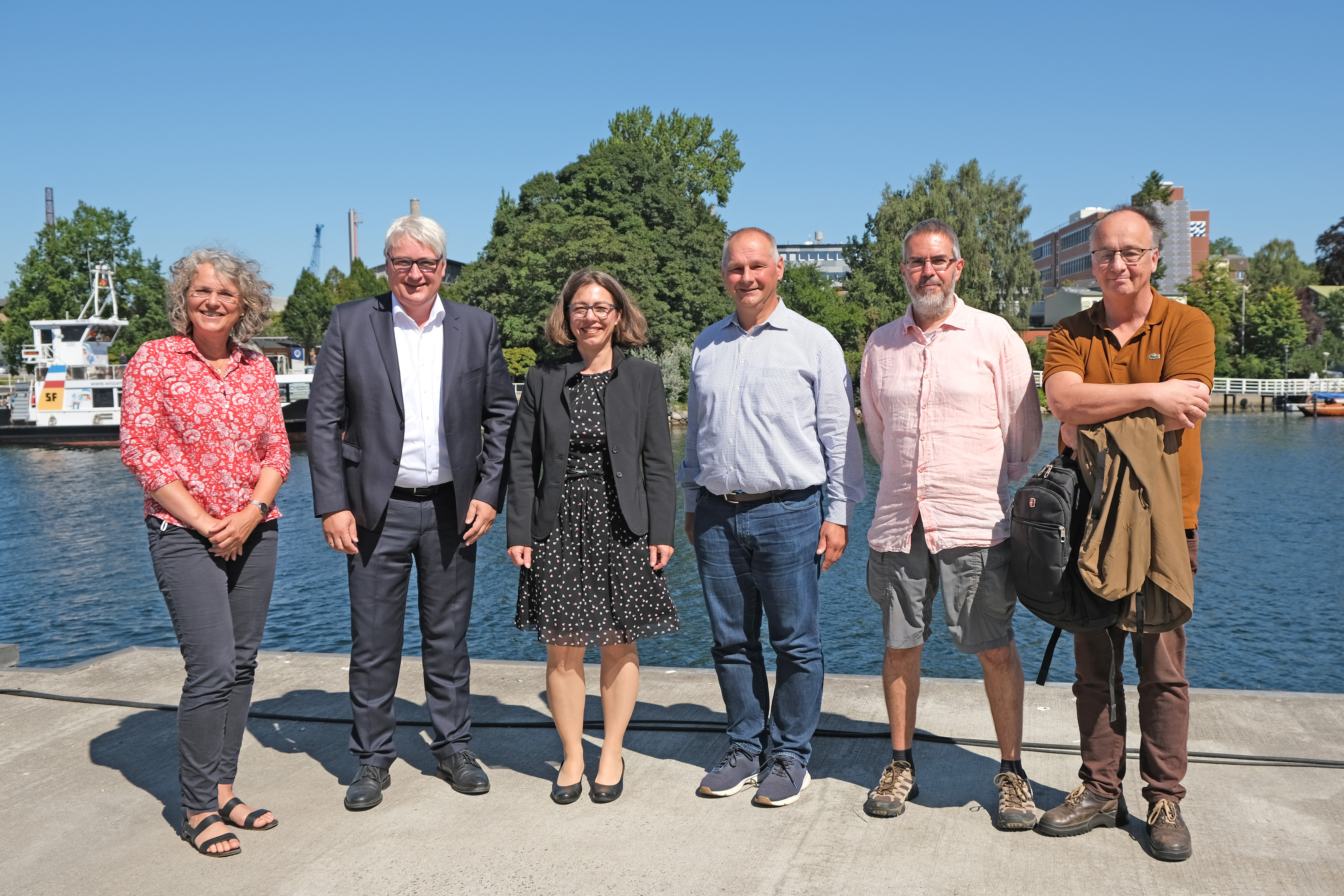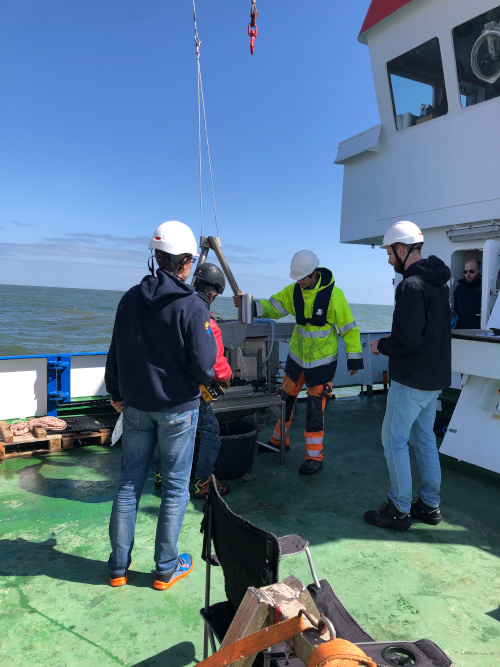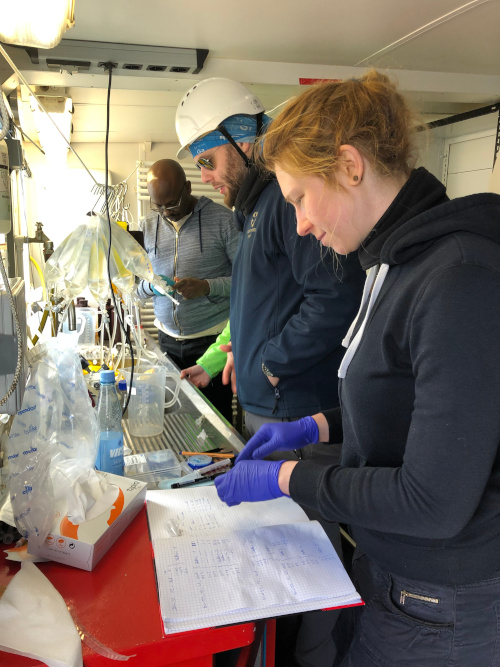0th CONMAR Newsletter
Kiel, December 2025
The 9th CONMAR Newsletter is available. You can find the latest issue here PROJEKTNEWS_CONMAR_022025_en.pdf
Daniela Henkel, GEOMAR
4th CONMAR Annual Meeting in Rostock
Rostock 8/9 December 2025
A year passes so quickly, and so it was time for the CONMAR annual meeting. From 8 to 9 December, the CONMAR team followed the invitation of colleagues from the University of Rostock and met at the wonderful and venerable university building. Ansgar Leefken and Sascha Kosleck gave us a warm welcome. We were delighted to welcome various external guests to our annual meeting this year: Susanne Korich (Head of Marine and Maritime Research, Geosciences and Shipping, Project Management Jülich), Careen Krüger (Scientific Advisor, Project Management Jülich), Elisa Janssen and Nora Klasen (both advisors at the Ministry for Climate Protection, Agriculture, Rural Areas and the Environment of Mecklenburg-Western Pomerania), Robert Mollitor (Head of the EOD Service in Mecklenburg-Western Pomerania) and Eyk-Uwe Pap (General Manager, Baltic Taucher). To kick off our meeting, Mr Pap and Mr Mollitor gave us a report on the recent pilot munition clearance that has been conducted in the framework of the immediate Programme of the German in Grossklützhöved/Boltenhagen in Mecklenburg-Western Pomerania. It was a meeting with valuable discussions. We look forward to the coming year with new challenges and joint research.
Daniela Henkel, GEOMAR
AL642: Another expedition with the RV Alkor as part of research on dumped marine munitions
Kiel October 2025
The Alkor expedition (AL642) took place from 14 to 29 October 2025. As part of three research projects, AL642 is investigating dumped marine munition: CONMAR-II, MuniRisk (addresses the problem of marine munition and its risk assessment at a stakeholder level in the European Baltic Sea region) and MMinE-SwEEPER (the largest of the three projects), which involves technical developments in the field of munitions detection and robotics, as well as knowledge transfer, stakeholder activities and the design of a European solution. During the first leg of the expedition, the team investigated a dumping area for chemical munitions northeast of Bornholm. A significant portion of the officially designated dumping area was mapped during one short (two-hour) and two long (20-hour) dives with the AUV 'Abyss', as well as two shorter missions with the AUV 'Albert'. As the seabed here consists of homogeneous soft sediment, hard contacts could be clearly identified in the backscatter data. Individual hard contacts are visible throughout the mapped area, and ROV dives have revealed that these are bombs, some of which are heavily corroded. Often, only the tail fins of 250 kg bombs are visible, along with yellowish/orange chunks of encapsulated warfare agents such as mustard gas. But isn't mustard gas dangerous? No, not anymore, once is in waters it hydrolyses very quickly (half-life of 15 minutes) into non-toxic substances, so simply looking at it poses is not dangerous. After four successful days, however, the ALKOR had to seek shelter in Rønne on Bornholm, as strong north-westerly winds would have made it impossible to work with AUVs and ROVs in the work area. Then it was time to move on. The AUV 'Abyss' was deployed for another 20-hour overnight dive. Additionally, a CTD grid was sampled across the entire Bornholm Basin to evaluate potential contamination with TNT and other explosives. Then the AUV 'Luise' was deployed. 'Luise' explored clusters of bombs using photogrammetry. At the same time, magnetic surveys were carried out to determine whether larger munitions were buried in the sediment. An initial viewing of the photos shows heavily corroded munitions. These images are currently being processed into a photomosaic and a DTM (digital terrain model). On the way back, there was a brief stop at the Nord Stream 1 pipeline blast site. The aim was to document the environmental conditions there three years after the explosion. During the second week, the impact of the pilot clearances carried out in August this year on the marine environment was investigated in Lübeck Bay.
Mareike Keller, GEOMAR
Left: AUV Abyss on the deck of the ALKOR (left) and chemical warfare agent in the Bornholm Basin (right) Right: CTD on the deck of the ALKOR (left) and a view of the dry lab on the ALKOR as the AUV control center (right)
CONMAR at the Federal Environment Minister's visit to Rostock
Rostock, 02. July 2025
On 2 July 2025, Federal Environment Minister Carsten Schneider visited the Ocean Technology Campus in Rostock at the invitation of the state government of Mecklenburg-Western Pomerania. He was accompanied by Minister President Manuela Schwesig and Environment Minister Till Backhaus. The aim of the visit was to present Rostock as a possible location for a future federal centre of excellence for munitions recovery in the North Sea and Baltic Sea. After introductory remarks by the Minister-President and the Federal Minister, the two Rostock project partners from the CONMAR consortium had the opportunity to present their current research work: the Leibniz Institute for Baltic Sea Research Warnemünde (IOW), represented by Oliver Zielinski, and the University of Rostock, represented by Sascha Kosleck and Ansgar Leefken. In the ensuing discussion, key research findings were explored in greater depth and questions regarding practical implementation were discussed. The great interest and in-depth knowledge of the political visitors regarding the issue of munitions contamination underscore the increasing relevance of the topic at the federal political level. The removal of munitions contamination in the North Sea and Baltic Sea is enshrined in the German government's coalition agreement as a national task – a strong signal for concrete action.
Ansgar Leefken, Universität Rostock
CONMAR at the Kiel Munition Clearance Week/ KMCW
Kiel, 18.-20. June 2025
From June 18 to 20, the second edition of the Kiel Munition Clearance Week (KMCW) took place. The event was opened by Schleswig-Holstein's Environment Minister Tobias Goldschmidt and Jann Wendt (north.io), the initiator of the event. The Kiel Munition Clearance week is the international expert conference dealing with munition clearance in the sea. This year, the conference focused on solutions for the removal of underwater munitions and the protection of critical infrastructure in the North Sea and Baltic Sea. More than 200 participants from 16 countries came to Kiel, including representatives from the EU Commission, numerous federal and state authorities, the NATO, the German Navy and Navy representatives of other nations, as well as from industry, academia, and environmental organizations. CONMAR was strongly represented with all its partners. More information can be found here.
Daniela Henkel, GEOMAR
Photos @KMCW2025CONMAR at the 'Kieler Woche' 2025
Kiel, 21.-29. Juni 2025
Once again CONMAR was represented at the KiWo spectacle. The CONMAR team was represented at the info booth organized by the Schleswig-Holstein Ministry of the Environment (MEKUN) on the Kiellinie and informed visitors of all ages about marine munition research in the Baltic Sea. CONMAR was also present at OpenShip on the research vessel Alkor, where it inspired interested visitors with one of the most important instruments in CONMAR's munition research: the research vessel Alkor.
Daniela Henkel, GEOMAR
Photos by Sarah Uphoff/ GEOMAR1st sustainMare mission newsletter published
Geesthacht, June 2025
Click here for the 1st sustainMare newsletter.
Daniela Henkel, GEOMAR
CONMAR at the UNOC3 in Nice
Nice, France, 11. June 2025
On June 11, the European munition research, including CONMAR, of course, invited participants of the conference to an official UNOC3 side event on the research vessel Meteor under the motto: No time to waste: Tackling submerged munitions in European Seas. More than 70 international guests attended to learn about the topic of munition in the sea and the latest developments in solving the problem. The event was organized by GEOMAR, together with the BMUKN and HELCOM. Following the welcoming remarks (by Jens Greinert, GEOMAR, and Sebastian Unger, BMUKN), a panel discussion was held on the topic The Baltic Perspective: front-runner regional approaches to addressing a global threat with the participation of Rüdiger Strempel, Executive Secretary, HELCOM, Finland; Delilah Al Khudhairy, Director, Maritime Policy and Blue Economy Unit, European Commission (DG MARE), Belgium, Agnieszka Jędruch, Researcher at IOPAN, Poland, and Stefan Mehlhase, Marine Pollution Officer, BMUKN, Germany. Afterwards, participants were able to learn about various aspects of marine munition, such as the detection of munitions in the sea, legal aspects, impacts on the environment and the blue economy, and potential safety risks. The European munition network was also presented. We look back on an exciting exchange in an international setting on the beautiful METEOR. We would like to take tis opportunity to express our sincere thanks to everyone who made this event possible and helped to organize it. The CONMAR team was represenetd by Romina Schuster (AWI), Torsten Frey, Mareike Keller, Jens Greinert and Daniela Henkel (all GEOMAR) Special thanks go to the UNOC3 team at PtJ and the entire crew of the Meteor.
Daniela Henkel, GEOMAR
Photos by Sarah Uphoff/ GEOMARDialogue event on marine munition in Brussels
Brussels, 17. February 2025
On 17 February 2025, the dialogue event ‘Munition legacies at Sea and the European perspective’ took place at the Permanent Representation of Germany to the EU in Brussels. The invitation was issued by the Federal Ministry of Environment, Nature Conservation, Nuclear Safety and Consumer Protection, Germany with the Ministry of Environment of Schleswig-Holstein. The aim of the event was to bring together members of the European Parliament and the European Commission, representatives of governments, NGOs and scientists and other experts to discuss the challenges and opportunities associated with dumped ammunitions in European waters. Jens Greinert (GEOMAR) was invited to give a keynote speech on the latest scientific findings on the topic of munitions in the sea. Another participant from the CONMAR consortium was Matthias Brenner (AWI).
Daniela Henkel, GEOMAR
8th CONMAR Newsletter
Kiel, February 2025
The 8th CONMAR Newsletter is available. You can find the latest issue here PROJEKTNEWS_CONMAR_Newsletter_8_en.pdf
Daniela Henkel, GEOMAR
CONMAR Good bye 1st phase - Welcome 2nd phase
Kiel, 2.-3. December 2024
From 2 to 3 December 2024, the CONMAR- 1 final meeting and the kick-off meeting for the second phase took place at GEOMAR Helmholtz Centre for Ocean Research in Kiel in Kiel with the participation of 25 CONMAR colleagues. The findings of the last three years - including the research gaps identified - were discussed in depth. Planning for the second phase was also on the agenda: What will happen in CONMAR-2? You will find answers to this question here over the next three years.
Daniela Henkel, GEOMAR
Dialogue event: Munitions in the sea - science, pilot recovery and what next?
Berlin, 26. November 2024
On 26th November 2024, the DAM and NABU jointly hosted a dialogue event entitled ‘Munitions in the sea - science, pilot salvage and what next?’ at the Futurium in Berlin to discuss with representatives of the parliamentary groups how to proceed following the pilot munition clearance recently launched in the Bay of Lübeck as part of "Sofortprogramm". After welcome addresses by Dr Monika Fischer (BMBF) and Mr Dieter Janecek (Maritime Coordinator of the Federal Government for Maritime Economy and Tourism) two keynotes followed: Jens Greinert (GEOMAR) gave a first insight into the latest results of the monitoring accompanying the pilot clearance, which is being carried out by CONMAR. As well as Kim Detloff (NABU), who addressed the expectations of politics and industry after the pilot salvage from the perspective of NABU. State Secretary Dr Christiane Rohleder (BMUV), Astrid Damerow MdB (CDU), Olaf in der Beek MdB (FDP) and Dr Sebastian Schäfer MdB (Bündnis 90/Die Grünen) took part in the subsequent panel discussion ‘From pilot salvage to large-scale munitions clearance in the German North and Baltic Seas’.
More information are available here.
Daniela Henkel, GEOMAR
@pictures Stephan Röhl7th CONMAR Newsletter
Kiel, October 2024
The 7th CONMAR Newsletter is available. You can find the latest issue here PROJEKTNEWS_CONMAR_Newsletter_7_en.pdf
Daniela Henkel, GEOMAR
6th CONMAR Newsletter
Kiel, February 2024
The 6th CONMAR Newsletter is available. You can find the latest issue here PROJEKTNEWS_CONMAR_Newsletter_6_en.pdf
Daniela Henkel, GEOMAR
Munition clearance - Here we go - An Information Day at GEOMAR
Kiel, 24. June 2024
On the morning of 24 June, almost 100 invited representatives of the Federal Government and the State of Schleswig-Holstein, medium-sized munitions clearance companies, sensor and software developers, large-scale industry such as ThyssenKrupp Marine Systems and German Naval Yards, representatives of the German Navy, the Schleswig-Holstein munitions clearance service, the Federal Police, non-governmental organisations and the scientific community - civilian and military, such as WTD71 - met at GEOMAR to find out about the launch of the "Munitions clearance in the North and Baltic Seas" Sofortprogramm launched by the BMBF. Representatives of the entire affected steakehodler portfolio came together for the first time at this event. Mr Tobias Goldschmidt, Minister for Energy Transition, Climate Protection, Environment and Nature (MEKUN) of Schleswig-Holstein, and Ms Katja Matthes, Director of GEOMAR, welcomed the guests. Afterwards, an exhibition format was offered to the interested public, in which the exhibition "North Sea Wrecks" of the German Maritime Museum (DSM) as well as information booths on techniques and work around the topic of muntition were shown. There was also a series of lectures with various contributions from CONMAR. We are happy to welcome more than 200 people to the afternoon programme for the public.
Daniela Henkel, GEOMAR
My internship at GEOMAR
Kiel, 21. May-07. June 2024
From 21.05. to 07.06.2024 I had the opportunity to do an internship at GEOMAR. As a part of this internship I had the chance to look into many different working groups at GEOMAR. I had been taken to the lab, gained some knowledge about research relevant software techniques and could help setting up the new mesocosms, to just name a few activities. The highlight of my internship was two day cruises with the research vessel ‘Alkor’, where we tested the interaction between the Crawler and the XploTaker. The XploTaker takes samples out of the water, which will be than analysed for their chemical compounds. This is relevant to determinant how much TNT and other chemicals are released from the munition in the water. Based on these data, a better decision can be made as to when or whether these munitions should be recovered. Overall, the cruises were an incredible experience. This was largely due to the fact, that the people on the ship were exceptionally open and shared a profound passion for the work with the Baltic Sea. Just as important as their commitment to the research was, that they ensured that I would understand what they do and that I could relate to it. As a result of that they all took lots of time to explain what was happening both in the Baltic Sea as well as on the ship.
Joschka Freiwald, 11th grade student at the Freien Waldorfschule Eckernförde
CONMAR at the SETAC Europe in Sevilla
Sevilla, 5.-9. Mai 2024
The 34th annual meeting of the Society of Environmental Toxicology and Chemistry (SETAC) took place in Seville from 5-9 May 2024. It is a non-profit, global organisation consisting of more than 16,000 members and 85 partner organisations in over 90 countries, dedicated to the advancement of environmental science and management. This year's event took place under the motto "Science-based solutions in times of crisis: Integrating Science and Policy for Environmental Problems."
The focus was on the following topics:
- Environmental and human toxicology: From molecules to organisms, from omics to in vivo.
- Ecotoxicology becomes stress ecology: From populations to ecosystems and landscapes
- Environmental chemistry and exposure assessment: Analysis, monitoring, fate and modelling
- Ecological and human health risk assessment of chemicals, mixtures and stressors and risk mitigation Strategies
- Life cycle assessment and foot-printing
- Environmental policy, risk management, and science communication
- Moving beyond - cross cutting themes, emerging and transdisciplinary topics
Prof. Dr Edmund Maser, University Medical Center Schleswig-Holstein (UKSH) in Kiel and PI in CONMAR and Dr Guilherme Lotufo from the US Army Engineer Research and Development Center, Vicksburg, USA had successfully applied for a session entitled: "Legacy of War: Environmental Contamination, Ecotoxicity and Human Health Concerns of Explosives and Chemical Warfare Agents".
CONMAR contributions:
- A. Beck: Monitoring environmental contamination from relic munitions in the Baltic Sea using lab-based methods and novel fieldable instrumentation
- E. Maser: How Contaminated is our Fish with Munition Chemicals from World War Relics
- M. Brenner, R. Schuster, I. Binder, T. Bünning, J. Strehse, E. Maser: Depuration Kinetics of TNT and its Metabolites in lab Exposed Blue Mussels (Mytilus edulis, L.)
- G. Lotufo, E. Maser, J. Strehse: Munitions at Sea: Making ecotoxicological sense out of a littered seafloor – spatial and temporal considerations
- K. Arinaitwe, A. Beck, M. Gledhill, J. Greinert, E. Achterberg: Spatial Distribution of WWII Legacy Munition Compounds in the Baltic Sea
- T. Bünning, J. Strehse, E. Maser: Ecotoxicological risk of World War relic munitions in the sea after low and high order blast in place operations
- R. Schuster, F. Binder, M. Brenner: Heritage of war - a multi-biomarker approach to investigate the effects of sunken war wrecks on common dab (Limanda limanda) in the North Sea
- W. Schütte, J. Van Landuyt, J. Strehse, T. H. Bünning, S. Van Haelst, K. Parmentier, E. Maser, N. Boon, M. De Rijcke Bacterial clues of shipwreck TNT pollution in the North Sea
- R. Schuster, F. Binder, M. Brenner: Biological effects of munition left on war wrecks on the health of blue mussels (Mytilus edulis, L.) in the North Sea
Edmund Maser, UKSH & Matthias Brenner, AWI
2nd CONMAR Annual Meeting on the Isle of Vilm
Vilm, 12.-14.February 2024
The 2nd CONMAR Annual Meeting took place from 12 to 14 February 2024 at the International Academy for Nature Conservation Isle of Vilm located near the beautiful Isle Rügen. In presentations and workshops, we exchanged information on the latest research results and started the planning of further activities in 2024. In addition to the actual working meeting, CONMAR invited representatives of various interest groups on 12 February 2024 to provide them with the current status of munitions research and to discuss the clearance activities that - on behalf of the German government - will begin in the second quarter of 2024. In total, more than 35 people attended the meeting on Vilm. We would like to thank all participants for the valuable exchange of ideas and the stimulating discussions. We would also like to thank the BfN for giving us the opportunity to hold our meeting at this special location.
Daniela Henkel, GEOMAR
5th CONMAR Newsletter
Kiel, February 2024
The 5th CONMAR Newsletter is available. You can find the latest issue here.
Daniela Henkel, GEOMAR
sustainMare Mid Term Conference - A great success for the mission and for CONMAR
Kiel, 30. August - 1. September 2023
From 30.08.-01.09.2023, almost 200 participants, including politicians, scientists, representatives of authorities and associations as well as industry came together at the CAU in Kiel. The conference was organised by CAU (SpaCeParti) and GEOMAR (CONMAR) in close cooperation with the mission coordination. As part of the sustainMare Mid Term Conference, an event for young researchers (PhD students and postdocs) already took place on 29.08.2023 at GEOMAR in close collaboration with FYORD and PACT, with more than 50 participants. We would like to thank all participants for their commitment, which made this event a great success. More information can be found here.
Daniela Henkel, GEOMAR
©Josephine Wolf, Uni KielScientists from AWI and GEOMAR together on the research vessel Heincke in the North Sea
North Sea, 6-20. June 2023
Scientists from AWI and GEOMAR spent 14 days together on the AWI research vessel Heincke in the North Sea. During this cruise, the concentrations of explosives in water, sediment and fish were investigated for the first time. Samples were taken from the entire German Bight, from the German-Dutch border up to Sylt. Furthermore, already known dumping and munitions suspicion sites around Helgoland, Sylt and north of the island Spiekeroog could be mapped in high resolution and examined magnetometrically. First results of the joint excursion can certainly be presented during the Mid-Term-Meeting at the end of August in Kiel!
Matthias Brenner, AWI
Toxicologists from Kiel University explain the environmental hazards of dumped World War II munitions at the Council of the Baltic Sea States meeting in Wismar
Wismar, 1/2. June 2023
At their meeting in Wismar on June 1 and 2, 2023, the foreign ministers of the Council of the Baltic Sea States agreed on closer cooperation in the salvage and disposal of munitions from the world wars that are stored on the seabed. German Foreign Minister Annalena Baerbock wants investors in the construction of offshore wind farms in the Baltic Sea to participate in the salvage of munitions waste in the future. In the final declaration, the council members point out the dangers that conventional and chemical munitions pose to the marine environment, fisheries, shipping and renewable energy plants. According to estimates by the Fraunhofer Institute, there are up to 400,000 tons of conventional munitions and about 40,000 tons of chemical warfare agents in the Baltic Sea. The Institute for Toxicology and Pharmacology for Natural Scientists of the University Hospital Schleswig-Holstein under the direction of Prof. Dr. Edmund Maser provided essential insights into the environmental hazards of these toxic explosives in more than 10 years of research work. After a short lecture by Dr. Jennifer Strehse in Wismar, Dr. Strehse and Prof. Maser were available to answer the foreign ministers' questions.
Edmund Maser, UKSH
left: Dr. Jennifer Strehse and Prof. Edmund Maser in front of exhibits of rusting World War II ammunition. (pic: E. Maser)
middle: The 25 foreign ministers of the Council of the Baltic Sea States and their delegation are welcomed by the Prime Minister of Mecklenburg-Western Pomerania Manuela Schwesig. (pic: E. Maser)
right: Dr. Jennifer Strehse during her presentation on the dangers of dumped World War II munitions to the foreign ministers of the Baltic Sea states. (pic: E. Maser)
Marine Munition Data Compilation – Germany
Kiel, 26. May 2023
The Marine Munition Data Compilation - Germany as a data management product of WP2 went online at the Marine Data Portal of the German Marine Research Alliance (Deutsche Allianz Meeresforschung (DAM)).
Project stakeholders as well as the public can explore open datasets on the subject “Munitions in the Sea”. The contents of this portal are highly federated. The displayed data is therefore hosted at the data-producing locations (scientific centres, authorities, private sector, etc.) themselves and are only merged in the viewer. The viewer thus represents a central tool to enable cooperative and collaborative work on the data generated in the project and will be further developed over the course of the CONMAR project."
Marcus Krüger, GEOMAR
EGU 2023 - CONMAR contribution invited to press conference
Vienna, 28. April 2023
At the EGU 2023, CONMAR scientists organized a session on "The impact of munition components on the marine environment". CONMAR has contributed with several presentations. One of these, together with only 22 out of a total of 17,000 conference abstracts, was honored to be invited to an international press conference with more than 190 journalists.
Daniela Henkel, GEOMAR
Making research tangible for pupils
Bremerhaven, 17. April 2023
CONMAR is actively engaged in getting young people excited about research. As part of a cooperation with the Lloyds Gymnasium Bremerhaven, Dr. Jörn Peter Scharsack (CONMAR member at the Thünen Institute) gave a lecture for 7th graders on the topic of marine munitions contamination on April 17, 2023. The students were very well prepared and participated actively in the discussions on the lecture.
Jörn Scharsack, Thünen
With the research vessel Alkor (again) in search of munition in the Baltic Sea
Baltic Sea, 17.-31. March 2023
From March 17-31, 2023, a 14-day cruise took place with the participation of 16 scientists and engineers as part of the CONMAR project. The aim was a further investigation of munition dumping sites in the German Baltic Sea. For this purpose the following equipment was used: CTD, VanVeen Grab, MiniMUC, XOFOS, Multibeam, ROV and an AUV. In the wet lab, the XploTector was used for direct measurement of TNT components. The study area covered the coastline from the Flensburg Bay to the Polish-German border above the Szczecin Lagoon.
Daniela Henkel, GEOMAR
Numerical models - a tool for identification and prioritization of (munitions) contaminant sources
*Rostock, March 2023
Several scientific projects have been carried out in the Baltic and North Sea to assess the possible threat to the marine environment through dumped munitions, mainly after the two World Wars. For example, it is now known that munitions dumpsites are hotspots of chemical pollution. Toxic substances, such as TNT, are released into the seawater. The last 60 years led to extensive metal shell corrosion and resulted in munition compounds' leakage. Therefore, it is crucial not only for the protection of the marine environment but also for the safety of the offshore infrastructure to map the dumpsites, prepare samples for disposal, and propose remediation and clearance measures. Oceanographic modeling is a powerful and indispensable tool to understand the processes controlling the dispersion of munitions compounds in seawater (e.g., TNT). Oceanographic models are widely used to simulate the state of the ocean. They can also be used to simulate and predict the distribution and dispersion of munitions compounds. Numerical models allow us to identify and prioritize contaminant sources, produce risk maps, and ultimately provide decision-making recommendations. In CONMAR, the Leibniz Institute for Baltic Sea Research (IOW) is responsible for oceanographic modeling. To be able to simulate the Baltic Sea and the Western Baltic Sea in a regional nest with higher resolution, we use the General Estuarine and Transport Model (GETM), a state-of-the-art numerical coastal ocean model, and an attached TNT module. More than 30 tracers have been released into the virtual ocean to model the release of TNT from potential munitions disposal sites. The locations of these sources correspond to known and documented munitions disposal sites. Since some munitions dump sites have yet to be discovered or have been inadequately sampled, the model results are also used to detect such potential sources. Sensitivity experiments and numerical simulations will be performed to evaluate the contribution and magnitude of individual munitions disposal sites to total TNT contamination. We will use these results to develop a priority list of contaminated sites.
To improve the model performance, plenty of observational data are necessary. In-situ observations are commonly used to validate and calibrate numerical models. Here, the observational data that were collected during dedicated field campaigns are used to evaluate and boost the GETM performance. The ship-based measurements are also used to constrain the simulated TNT release and achieve more consistent results. The first numerical experiments indicate that the existing model can serve as a predictive tool for the spread and dispersion of munitions-related chemicals.
Dissolution and degradation experiments are also planned in order to quantify the rate at which chemicals enter the marine environment. This will be incorporated into the numerical model for the first time. The model will also be used to study the potential effect of climate change on marine munitions since it is currently unknown to which degree the sea-dumped munitions can be affected by increased ocean temperatures or altered storm activity. Further model developments are planned to account not only for the dissolved but also for the particulate munition compounds.
Ulf Graewe, IOW
The video at https://www.youtube.com/watch?v=cvrD8027izU shows TNT concentration in the near bottom layer for the year 2018. Please note the non-linear color coding.
Announcement - CONMAR at the Marine Environment Symposium from 9-10.05.2023 in Hamburg
*Hamburg, 9.-10. May 2023
Every year, the Federal Maritime and Hydrographic Agency organizes the Marine Environment Symposium in Hamburg in cooperation with the Federal Environment Agency and the Federal Agency for Nature Conservation on behalf of the Federal Ministry for the Environment, Nature Conservation, Nuclear Safety and Consumer Protection. In 2023, the focus will be on the state of the North Sea and the Baltic Sea and other current topics such as offshore wind energy, underwater noise as well as munitions in the sea. CONMAR will be represented again this year with presentations and posters on the latest findings on the topic of munitions in the sea (here for the program).
Daniela Henkel, GEOMAR
FS Heincke sets sail again in the name of research on munition in the sea
*North Sea, 20.-24. February 2023
Accompanied by two members of the press, the team of North Sea Wrecks set sail with the research vessel Heincke for another trip to wrecks in the German Bight (HE613, February 20-24, 2023). The goal was to take samples directly at the wreck of the SMS Mainz together with the AWI divers and to fish around the SMS Ariadne. Unfortunately, the weather was once again a problem for the NSW team. The divers were able to approach the wreck, but after the last storm days the visibility near the bottom was so bad that the sampling by the divers had to be aborted. The work on the SMS Ariadne was more successful. Here, enough fish could be caught, whose samples can now be analyzed in the laboratories of AWI and Kiel University.
Matthias Brenner, AWI
@pictures: AWi/Ute MarxKick-off - Immediate Munition Recovery Program
Berlin, 17. February 2023
In the coalition agreement, the German government committed itself to setting up an immediate program to pilot munition clearance and destruction. A planning and coordination project has been launched for this purpose. In order to ensure the close cooperation of all parties and interest groups - federal government, states, industry, science, civil society and environmental associations - necessary for this, the responsible Federal Ministry for the Environment, Nature Conservation, Nuclear Safety and Consumer Protection (BMUV) has invited to a kick-off meeting in Berlin on February 17, 2023. Steffi Lemke the Federal Minister for the Environment, Nature Conservation, Nuclear Safety, and Consumer Protection opened the event. CONMAR representatives were also invited to attend the meeting.
Daniela Henkel, GEOMAR
Equipment test drive for inspection, clearance and contamination monitoring
Kolberger Heide, Kiel, 16. Februar 2023
The cruise was a joint effort between GEOMAR, K.U.M. GmbH, and SeaTerra GmbH to test an in situ dissolved explosives sampling device on a newly-developed crawler for munitions inspection and clearance. The tests were conducted on FK LITTORINA near the Kolberger Heide munitions dumpsite. The crawler investigated several suspected munitions targets identified from bathymetric maps from the DSM group at GEOMAR. One object was likely a large stone, but a second target appeared to be a two-meter ground mine. Dissolved explosives were sampled near the targets using the XploTaker device developed during the EMFF-funded ExPloTect project. The XploTaker is visible mounted on the top of the crawler in the images. Explosive samples were then measured onboard LITTORINA by the Xplotector, a portable and automated system also developed during the ExPloTect project. Together, these innovative systems provide the necessary tools for inspection, clearance, and contamination monitoring during remediation of underwater muntions.
Aaron Beck, GEOMAR
CONMAR reaching out to the North Sea ─ first sampling of fish at outer Jade munition dump sites
North Sea, 16.-27. January 2023
According to archive research, enormous amounts of munition (>300 000t, amucad.org) were dumped in the Northern Jade estuary after WWII. Due to ongoing corrosion of the dumped munition, leakage of harmful munition compound to the marine environment is expected. The SOLEA cruise 816, January 16-27 2023 (pic 1) aimed at the historically first sampling of fish (common dab, Limanda limanda) and water samples for munition compounds in close proximity to the North Sea Jade area dumped munition (see map). Before the start of the cruise, crew members and scientific staff received a briefing from the Lower Saxony explosive ordnance clearance service. Experienced ordnance clearers explained how to deal with munition that might be picked up with bottom beam trawls and left containers for the storage of munition items on board (pic 2). Due to heavy storm, the start of the cruise from Cuxhaven was delayed by one day. First sampling at Scharhörn reef was complicated by bad weather and half of the scientific staff being seasick. Sampling was continued at the outer Jade region near dumped munition and 30 dabs were successfully investigated and sampled for body fluids (blood, urine, bile) and tissues (liver, spleen, kidney, muscle, gill) for later laboratory chemical analysis for residual munition compounds such as TNT (trinitrotoluene). Bad weather and technical problems forced the ship to search protection in the harbour of Wilhelmshaven, due to high professionalism of the crew, the cruise was continued instantly and more sites around the Jade estuary and further west along the German coast up to the Ems estuary were sampled. On the way back to Cuxhaven, last sampling in the Jade estuary yielded a corroded chunk of munition, the bottom part of a 8.8 cm munition shell which contained residuals of the propellant, indicating the it was a dumped (not discharged) munition item (pic 3). Visible inspection of fish for diseases on board did not reveal any obvious health issues of dab collected near munition dump sites in comparison with control sites without dumped munition. Samples from water and fish were transferred to participating laboratories (AWI, GEOMAR, UKSH, Thünen) and are currently processed for chemical analysis of potential residual munition compounds. Laboratory analysis will reveal if and to which extend fish are contaminated with munition compounds.
Joern Scharsack, Thuenen
CONMAR Annual Meeting in Berlin
Berlin, 12 December 2022
For the first time, the CONMAR consortium met after one year of operation. From 12-13.12.2022, about 30 CONMAR members came together to present and discuss the results udn project progress of the last year. The meeting was hosted by CONMAR partner the Global Climate Forum in Berlin. A big thank you to all participants for coming and for the fruitful exchange.
Daniela Henkel, GEOMAR
RV ALKOR sets (again) sail for munitions research
Kiel, 30 October 2022
From 24.-31.10.2022 a team of technician, engineers and researchers the GEOMAR Helmholtz Centre for Ocean Research Kiel and the Senckenberg am Meer Marine Research Institute joined a cruise (AL583) to the Western Baltic Sea on RV #ALKOR. In the framework of the projects BASTA, CONMAR and ExPloTect, we successfully continued our multidisciplinary research concerning marine UXO and explosive compounds detection methods. For the first time we achieved that our backseat driver algorithm of Girona500 AUV "Luise" successfully managed to autonomously locate and examine an individual UXO object solely based on in-situ magnetic anomaly detections. Regarding the biochemical research, dozens of van Veen grab samples were collected inside and outside of munition dump sites. CTDs were run at more than 50 stations along the coast at various depths.The analysis will help to answer, inter alia, the following questions: What influence do munition compounds have on the species diversity and abundance of the benthic fauna in the Baltic Sea? Which munition compounds can be detected where and in which concentrations? Do the compounds accumulate in the sediment?
Daniela Henkel, GEOMAR
RV Searching for ammunition traces in the North Sea with the RV Heincke
Bremerhaven, 29 September 2022
After the first autumn storm delayed the departure by two days, the North Sea Wreck (NSW) team set out together with arte for the last project trip to the German Bight. The targets were WW1 wrecks, including a minelayer submarine (UC30) off Esbjerg and two light destroyers, SMS ''Mainz'' and SMS 'Ariadne', both sunk west of Helgoland. Followed at every turn by the arte camera drones and microphones, the team was able to sample water, sediment and fish at the UC30, but failed to produce video footage with the ROV. Reason: the current around the wreck was simply too strong to keep the ROV on course. Under time pressure water samples could still be taken at 'Mainz' and 'Ariadne'. However, the fishnets on the Ariadne were completely empty. Only one dab could be caught by the NSW team for their investigations. But the ROV remains on board and the colleagues from ICBM Oldenburg want to start further attempts to film the wrecks in the next leg of the cruise. We are excited and keep our fingers crossed.
Matthias Brenner, AWI
Munition in the sea - state of affairs and perspectives
Berlin, August 2022
Together with DAM (German Alliance for Marine Research), we have produced a German position paper on the state of knowledge and the possible future of munitions in the sea. With this, we want to inform politicians and other decision-makers and offer insights into possible solutions to the problem.
Daniela Henkel, GEOMAR
DAM-Papier-Munition-im-Meer-Sachstand-und-Perspektiven-Stand-August-2022.pdf
Munition in the Sea on the political agenda
Kiel, 11 August 2022
The two members of the Bundestag Mr. Sönke Rix and Mr. Mathias Stein informed themselves today at GEOMAR among other things about the problem of munition in the sea and the status quo of research.
Daniela Henkel, GEOMAR
(from left to right: Prof. Dr. Sylvia Sander (GEOMAR), MdB Sönke Rix, Prof. Dr. Katja Matthes, Director GEOMAR, MdB Mathias Stein, Prof. Dr. Jens Greinert (GEOMAR), Prof. Dr. Klaus Wallmann (GEOMAR))
Daniela Henkel, GEOMAR
Parliamentary Evening
Berlin, 22 June 2022
One important aspect of solving the issue of munitions in the sea, is the collaboration between scientific institutions, private companies and other stakeholders. To further strengthen these connections and to inform German parliamentarians, Fraunhofer IGD invited members of the German Bundestag, CONMAR members and other guests to an informative evening in Berlin. The event was opened by a keynote from Claudia Müller (Federal Government Coordinator for the Maritime Industry and for Tourism). Presentations on the role of the expert group Munitions in the Sea (Dr. Johannes Oelerich, MELUND), on the German navy's capacities (Flottillenadmiral Jürgen zur Mühlen), on the private industries' capabilities and technological gaps (Jan Koelbel, STASCHEIT Kampfmittelräumung GmbH) and on applied science requirements (Prof. Uwe Freiherr von Lukas, Fraunhofer IDG) informed the audience on what is needed for a successful upscaling of maritime explosive ordnance disposal. Food and drinks were generously offered and the ensuing lively discussions on the way forward were sparked by the presentations, making this evening an interesting and successful one for all the participants.
Torsten Frey, GEOMAR
European Maritime Day 2022
Ravenna, 20 May 2022
The issue of ammuntion in the sea is receiving more and more attention all over Europe. To present the research that was done in Germany over the past years and to moderate a panel on the topic, I travelled to the European Maritime Day (EMD) event held in Ravenna, Italy. To make sure the perspective of the military and the relevant private sector industries on the topic were represented as well, we invited Catherine Warner (NATO CMRE) and Dieter Guldin (SeaTerra GmbH) to join our panel. This way, we were also able to cover the Baltic, the North and the Mediterranean Seas. In an one hour session, we offered a brief look at the problems related to the munitions and an extensive overview of the potential solutions. The entire session was recorded and can be viewed in the video below.
Torsten Frey, GEOMAR
Ahoi CONMAR
Wilhelmshaven, 3 May 2022
Today, as part of the CONMAR project, I had my first trip with a research cutter. After a corona test and a safety briefing, the Senckenberg left Wilhelmshaven at 8AM. At this trip we traveled until Wangerooge, including strong swell and a delicious lunch. According to research, there are about 600,000 tons of munition in this area. We went to a total of eight measuring stations, where we took water and sediment samples. These are now subsequently being analyzed for explosive-type compounds, pollutants, and TNT. This will provide information on the environmental impact of contamination from dumped munitions, which in turn will provide information on management strategies for dealing with these munitions. In addition, the samples will be used to build a database of marine bacterial populations for the sister project CREATE. The field trip was a lot of fun and gave me, as a social scientist, an excellent insight into the working procedures of my natural science colleagues from CONMAR and CREATE.
Alexander Pechmann, Global Climate Forum
